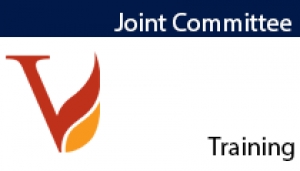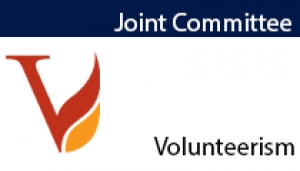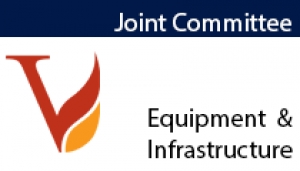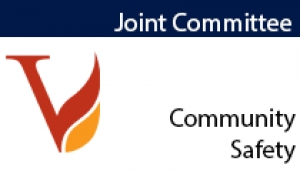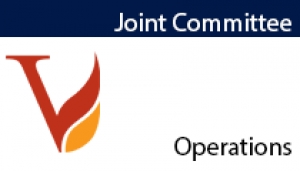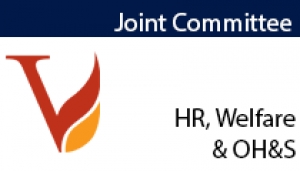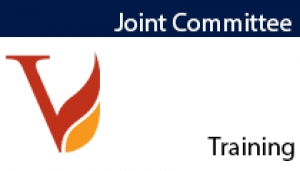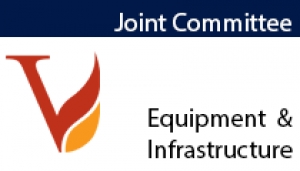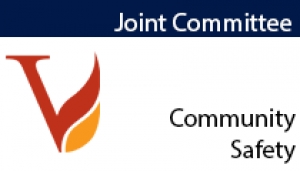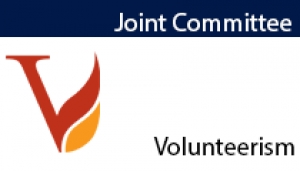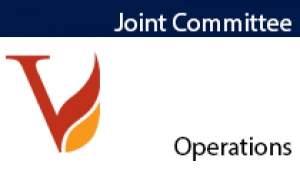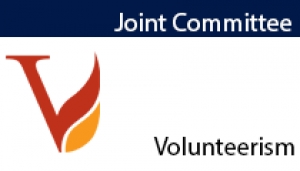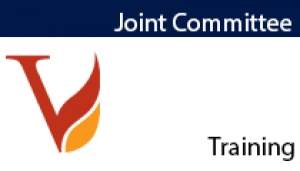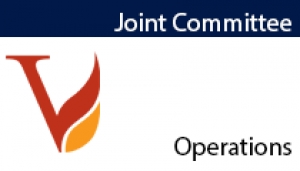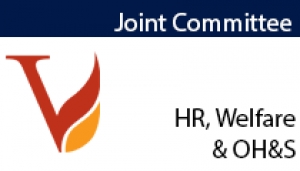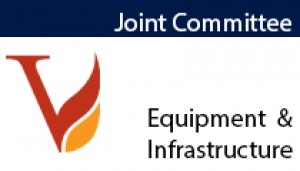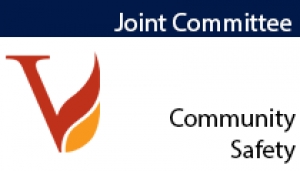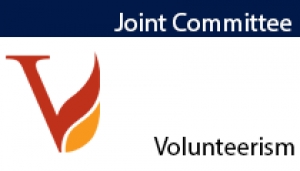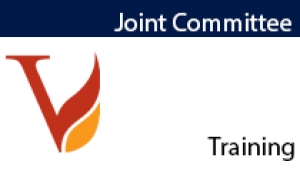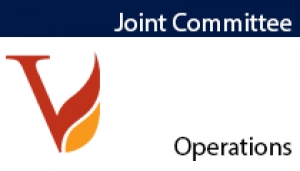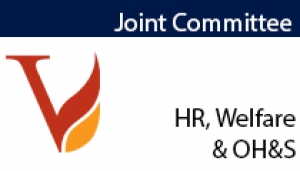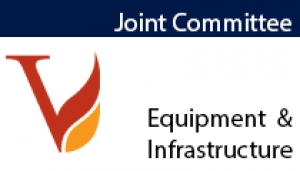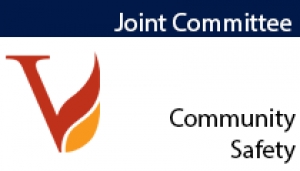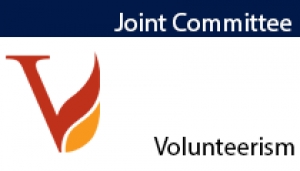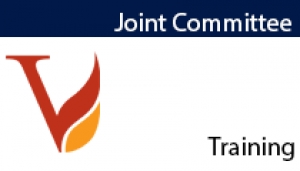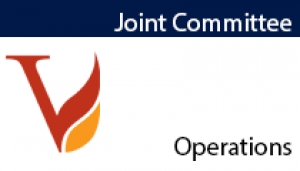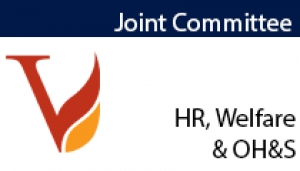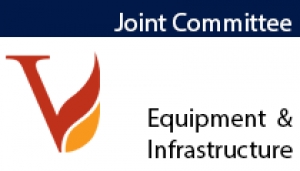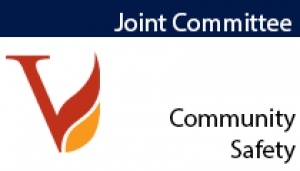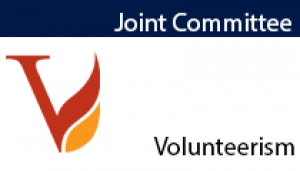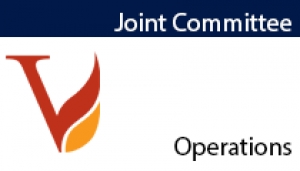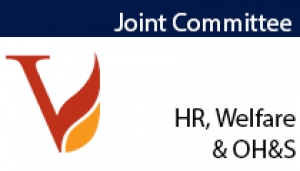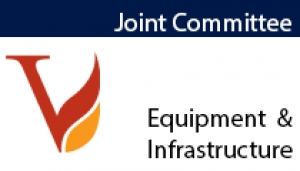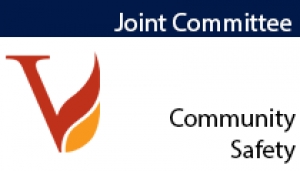2 Minute Briefing - Training
Issue 16: December 2016
Quick snapshot of the priority issues and actions worked through at the most recent Joint Committee meeting between CFA and VFBV. (Meeting held 20/11/2016)
NEW DEPUTY CHIEF OFFICER - TRAINING
The CFA Training department has again been restructured, with the Committee informed that Training has now been transferred to the F&EM (Fire & Emergency Management) directorate, and is now led by a Deputy Chief Officer - Training.
VFBV welcomes Acting DCO Gregg Paterson AFSM to the new position. Gregg brings energy and enthusiasm to the role and the Committee looks forward to working with him.
PUMPING PIT RECOMMISSIONING
VFBV has been strongly advocating for CFA to commit to a remediation and recommissioning program for pumping pits, whose use was temporarily suspended back in February 2015. There are approximately 91 pumping pits in use across the state. Of vital importance is the need for pumping pits to be safe, and for there to be an efficient and timely program to clean, monitor water quality and ultimately recommission them for use.
For many brigades, pumping pits form the only safe, controlled and viable option for brigades to train in drafting and other related pump operations and skills maintenance.
CFA have now issued a Work Instruction on the Management of Pumping Pits, and have implemented an approved recommissioning process. CFA have advised that the ultimate decision to recommission and fund the cost of these works rests with the Region. Water testing costs between $300/$400, with the cost of cleaning and refilling to be approximately $1,000.
Delegates have raised concern that due to Regional budget limitations, these costs will be pushed back to Brigades. CFA’s advice to these concerns is that Brigades should go through the Chain of Command and ultimately to Assistant Chief Officers who hold oversight of the Regions.
AVAILABILITY OF CHAINSAW TRAINING
The Committee continues to advocate for much greater access and support for members to attain chainsaw qualification and training. Despite two Mobile Chainsaw Training trailers developed through the Mobile Prop Project back in 2015 to add additional capability for members to access chainsaw training, a UFU grievance over the training package, equipment and trailer use and design has resulted in a yearlong ban on paid instructors using these trailers to deliver any chainsaw training, resulting in the widespread cancellation of CFA planned courses for volunteers.
CFA advises that the IR issues are now close to being resolved, and has confirmed that there are no IR restrictions that relate to volunteer trainer and assessors accessing, towing and using the trailers.
Whilst disappointed that brigades are currently unable to access paid support and delivery of chainsaw courses through CFA’s training pool, the Committee has requested that CFA increase the number of endorsed volunteer trainer and assessors to deliver this training, so that brigades can access this vital training for the upcoming fire season. CFA has agreed to streamline and prioritize volunteer access to the new trailers, equipment and training package, as well as investigate an EOI process for subject matter experts to be identified and endorsed for volunteer training and delivery.
ELECTRICAL SAFETY MOBILE PROPS
Despite significant work and progress on the design of an electrical safety mobile trailer prop back in 2014/15 CFA funding for the prop lapsed and is no longer available, leaving the project completely un-funded. VFBV is advocating for these mobile props to be fully funded and reprioritized. Electrical Safety and specifically skills maintenance for Low Voltage Fuse Removal has been identified as a state-wide gap for quite some time, and the Committee believes the electrical safety mobile props would significantly improve capability and member access to this vital training and knowledge.
FIRST AID TRAINING
Early results from CFA’s new First Aid Training arrangements with St John appears to be positive, with great acceptance of the out-of-session course work that cuts down the course duration and allows students to do some of the course work at home and in their own time. Adjustments for postal delays is now being factored into future courses.
2 Minute Briefing - Communications & Technology
Issue 16: December 2016
Quick snapshot of the priority issues and actions worked through at the most recent Joint Committee meeting between CFA and VFBV. (Meeting held 26/11/2016)
DIGITAL SCANNER/LISTENING SETS TIER 3 STILL OPEN
The Digital Scanner subsidisation program advocated by VFBV and run in partnership with CFA has been an overwhelming success, since it began in October 2015. So far, 10,478 digital scanners have been ordered and shipped to Brigades and Groups across the state. The subsidy budget, and the savings to members, represents over $3 million dollars.
More than 970 Brigades and 80 Groups have placed and received their Tier 1 & 2 orders, and Tier 3 is still under way. Under the Tier 1 program, every Brigade was entitled to a minimum of eight units at the subsidised price. On average, Brigades ordered 3.5 units under Tier 1, and Groups took up one of their guaranteed minimum of two units. Under Tiers 1 and 2 members paid $150 for a scanner, with the subsidy budget paying the other $296.75
Scanners are still available: CFA is still accepting Tier 3 orders, from Brigades, Groups and individual members. Tier 3 units are available at cost price, which was significantly reduced due to the bulk orders placed during the subsidisation program. Members can order units for $446.75 plus postage and handling, while stocks last. Order forms are still available from the VFBV website.
EAS PAGER OBSERVATION REPORTS MONITORING
Each quarter, the committee receives detailed reporting on the number of EAS Page observation reports submitted, including the type of issues reported, the length of time to investigate, and the results of each investigation. Encouragingly, since implementing this reporting cycle, the committee has observed a significant reduction in the time taken to resolve issues and the quality of reporting. Over the year, the 3 most common reported faults have been; not receiving messages (~38%), physical damage to the pager (~18%), and lost or stolen pagers (~10%).
Members are reminded of the importance of lodging EAS fault reports when they experience problems with their pagers. This information is critically important in identifying network performance issues as well as monitoring the health and status of the current pagers. The committee has requested that CFA investigate and prioritize the introduction of Electronic Observation Reports in addition to the current reporting option, which would provide more timely feedback to the member raising the concern. CFA has agreed to investigate, scope and report back.
PROPOSED REGIONAL RADIO DISPATCH SERVICE EXPANSION TO OUTER METRO DISTRICTS
For many years now VFBV and the Committee have been advocating for the Regional Mobile Radio Network to be expanded to cover the outer metropolitan districts. This network provides high quality digital P25 network capabilities and much improved radio audio quality. Under the Regional Radio Dispatch Service project announced back in 2013, the CFA network has been upgraded to the new digital network in all CFA districts excluding Districts 7, 8, 13 and 14 and has been a resounding success.
Unfortunately, these four Districts were not funded through RRDS and are still operating on the analogue dispatch network. Given these are amongst the busiest Districts in the state, the inability to access the digital dispatch network has far reaching consequences, one of them being these Districts will have no means to access improved functionality, such as the short status button functionality when it finally rolls out. Given the impact short status messaging will have on reducing radio congestion, this would provide a significant improvement to the busy outer metropolitan dispatch systems. In principle approval for expansion has now been announced, and CFA is now working with EMV, VicPol and SES in scoping a new project to potentially deliver on this commitment. VFBV welcomes this long awaited progress and will continue our advocacy to ensure the project receives adequate funding and government priority.
2 Minute Briefing - Volunteerism
Issue 16: December 2016
Quick snapshot of the priority issues and actions worked through at the most recent Joint Committee meeting between CFA and VFBV. (Meeting held 20/11/2016)
CFA HQ DIRECTORATE RESTRUCTURE – VOLUNTEERS & STRATEGY
The CFA Volunteerism department has again been restructured, with the Committee informed that the old Learning & Volunteerism directorate has been split, with training now being transferred to the F&EM (Fire & Emergency Management) directorate, and Volunteerism now merging with Strategy to form the new directorate of Volunteers & Strategy.
The Brigade Support Team has now been amalgamated with the Volunteerism team, with this team looking to focus on more field based staff connecting with brigades at the local level. They will explore recruitment and re-engagement, brigade sustainability, decline and growth patterns across the state, hub and cooperative models, and community connectedness.
The overall vision of the Volunteers and Strategy Team is to facilitate the growth of volunteerism and strengthen brigade sustainability. VFBV welcomes Executive Director John Haynes to the new position. John brings energy and enthusiasm to the role and the Committee looks forward to working with him. John’s vision is to look at more outcome based measurements, such as what we measure before, during and after fires – not just measuring performance based on time out the door.
CFA ANNUAL PLAN 2016-17 RELEASED
CFA has released its Annual Plan for 2016-17 that outlines its priorities for this period. This year’s plan outlines the five priority plan themes for CFA during the 2016/17 year. The five themes are; Capability; Culture; Stakeholder Engagement; Strategy, Plan and Direction; and Systems and Processes.
You can download a copy at; http://news.cfa.vic.gov.au/news/cfa-plan-a-must-read-for-all.html
VOLUNTEER TRAVEL REIMBURSEMENT & ARRANGEMENTS
Following reports of variances between CFA Regions and Districts in how volunteer travel reimbursements are paid and authorised, the committee has requested CFA develop a State-wide Business Rule that will standardise and clarify arrangements. VFBV’s long held policy is that no volunteer should be out of pocket due to their volunteering. The Committee continues to advocate for improved access to CFA vehicles – including corporate pool vehicles when required to travel for training or other CFA related activities that would otherwise create an impost or cost upon volunteers. Should an appropriate vehicle not be available, then volunteers should have access to travel reimbursement, which is currently set at $0.72 per km. CFA has agreed to progress a policy review.
AWARD WINNING PROGRAM FOR KIDS
A VFBV-supported project for secondary students has won the Education Award at this year’s Fire Awareness Awards, thanks to local CFA volunteers and the Maryborough Education Centre. The Emergency Services Journey takes Year 9 students to their local brigade, Police and ambulance station to see how each service operates and learn practical skills. What began as a Brigades in Schools program run by volunteers from the Maryborough Fire Brigade in 2004, has been developed into an innovative course at the Maryborough Education Centre by teacher, VFBV Board member and CFA volunteer Samantha Rothman.
The course also includes a camp in the Mallee and sessions at a surf life saving club, and the students achieve certificates in Life Saving skills and First Aid. The program includes team and confidence building, with activities like open water swimming and fire brigade competition events. The Emergency Services Journey program is funded by VFBV and the Maryborough Education Centre Principal David Sutton says the school is proud of the students for doing so well, and Samantha Rothman for her work in developing the program. Well done David, Samantha and the Maryborough Brigade!
2 Minute Briefing - Equipment & Infrastructure
Issue 16: December 2016
Quick snapshot of the priority issues and actions worked through at the most recent Joint Committee meeting between CFA and VFBV. (Meeting held 19/11/2016)
TANKER REAR DECK POD PROTOTYPE BECOMES A REALITY
For a number of years now, VFBV has been advocating for CFA to explore rear deck pods to trial as a possible replacement for rear deck ROPS, similar to those used in the mining industry. Ever since CFA’s decision to no longer manufacture rear deck ROPS and move exclusively to twin cab cab-chassis’, and the loss of DAH’s (Deck access hatches) volunteers have been raising concerns about the difficulty in accessing the rear deck area during jobs requiring crews to frequently move between the cab and the rear deck. The committee has been advocating for CFA to investigate the European body builders, where it has become common practice to purchase a single cab chassis and then build a crew area connected to the cabin as part of the body. This has a number of advantages including; that in a burn over situation all crew on the deck can quickly and safely return to the cabin; a reduction in crew fatigue across long fire-ground shifts; and greater safety when travelling to and from the fire ground and protection from smoke and embers.
The Committee was provided a tour and inspection of a Bell Engineering Heavy Tanker Pod Prototype, by Managing Director Robert Bell. The prototype is a ‘pod’ type construction which can be modified to slip onto any cab chassis. The ROP or rear cabin is fully self contained, very ‘roomy’ and has a large window with viewing access to the cabin and full size door access to the rear deck. A front mounted monitor, crew protection sprays, digital water level indicators on the sides as well as the back, ample storage lockers and an optional hydraulic BA lifter for easy operation are some of the great features. The Committee has requested that Bell Engineering consider loaning the prototype to CFA early next year so that a roadshow can be planned for members to view and inspect the prototype. Mr Bell has generously agreed, and VFBV extends its gratitude and appreciation to Mr Bell and the Bell Engineering Team, and congratulates them on their continued innovation, collaboration and support of Victorian fire services.
BURNOVER VEHICLE ENTRAPMENT RESEARCH - VIDEO
Following a presentation to the Committee earlier in the year from CFA’s Research & Development team, the Committee requested that CFA use this research to create a new burn-over training video that uses historical vision and vision from field testing filmed in February this year. The research team closely duplicated conditions similar to those experienced during the tragic Linton Fires in 1998 to test the response of CFA’s crew protection systems.
Three vehicles were tested, a tanker with ROP and crew protection, an Ultra-light with Gel coating and an Ultra light with foam coating. All vehicles were relatively unscathed with the temperature in the cabin of the tanker sitting at around 40 degrees whilst the outside temperature rose well above 600 degrees. The Committee has provided feedback on the new video, and has requested that a fact sheet be attached and be released along with SOP 9.32 ‘Entrapment Procedure’ for Brigades to use for their pre-summer training. CFA has released an online version on their facebook page.
This type of research is critical to ensuring firefighter safety and educating members on how the crew protection safety systems work, build confidence in those systems and the importance of situational awareness & entrapment procedures.
ROP CUSHION PROTOTYPE
Arcadia Brigade members briefed the committee on a prototype cushion for use in vehicles with rear deck roll over protection. As many would have experienced, the solid fibreglass ROP seat can be hard on your back and very slippery when cornering. The cushions have multiple functions in regards to firefighter safety, back injury reduction and firefighter comfort on long duration shifts amongst them. The Committee has requested they be field tested by 3 brigades in district 22 and will also be offered for testing by brigades in other Districts over the summer whilst analysis is completed.
The Committee had previously authorised a VESEP grant to support the trial, and VFBV thanks the Arcadia Fire Brigade for this pro-active initiative. A proban, a nomex and a marine canvas version are being field and burn tested over the summer.
2 Minute Briefing - Community Safety
Issue 16: December 2016
Quick snapshot of the priority issues and actions worked through at the most recent Joint Committee meeting between CFA and VFBV. (Meeting held 26/11/2016)
PLANNED BURNING AND BUILDING BRIGADE CAPABILITIES
For many years now VFBV has been advocating for a more holistic approach to planned burning, and for CFA to promote the training advantages of participating in planned burns.
The committee has been very pleased to observe that recent planned burns have developed into exercises, not just in fire behaviour and fuel load interactions but also extend to learnings in weather behaviour, impact on flora and fauna, bush heritage and Indigenous fire management practices.
The camps are very practical ‘hands on’ for all involved, each participant is specifically tasked with both coaching and mentoring roles, allowing involvement by volunteers across all aspects of the planned burning. Recent burn camps also saw attendances from Traditional Owners, Trust for Nature (landowners) bird scientists, along with DWELP, plantation owners and CFA paid staff.
The attendees worked well together and contributed experience and expertise, building valuable relationships and creating an atmosphere of co-operation in complex burn scenarios. These camps offer a great opportunity for volunteers to train in realistic settings and gain extensive fire firefighting experience.
The committee has requested CFA produce a brochure which clearly explains and illustrates upcoming Burn Camps to Brigades.
CFA-SES COMMUNITY ENGAGEMENT AND HAZARD AWARENESS FORUM
The joint CFA-SES community engagement forum was held at The Mantra in Lorne on 6th & 7th August, 2016.
The Forum is Victoria’s leading community safety conference for emergency service personnel and an opportunity for members to hear from both front line community safety educators but also leading community engagement specialists.
As well as the usual guest speakers, sessions and presentations, there were also outdoor displays by Coast Guard, CFA and SES, which were a resounding success. This year there were 481 attendees, 70% of those were CFA, 20% SES, this is a dramatic rise from 140 at the first forum in 2011. Volunteers from the North East and South East were very well represented with 65% of attendees coming from these two regions. The forum is growing in popularity and size.
The Committee will be reviewing the feedback provided by this year’s attendee’s and supports the continuation of this important forum. VFBV would like to recognize and congratulate the hard working members of the Volunteer Reference Group whose tireless energy and work helped to make this year’s event another resounding success.
THE FIRE SAFETY PLEDGE
Building on the success of last year’s campaign, CFA launched The Fire Safety Pledge to run between 3 November and 22 December.
Brigades are offered the chance to win one of three $1,000 cash prizes by encouraging members of their community to take the online “Fire Safety Pledge” at www.thefiresafetypledge.com.au
When members of the public make their pledge, they are asked to enter a local CFA brigade they wish to support. At the end of the competition, the brigade with the most number of pledges across the three different categories, will receive a cash prize of $1,000.
The categories are
1. Overall winner (brigade with the most votes)
2. Per-Capita – CFA brigade with the most votes relative to their population, and
3. Tiny Town – for brigades serving a population of less than 100 people.
As at 23 November (just three weeks into the initiative) 6,793 people have taken the pledge.
Any member of the public that takes the pledge will go into a draw to win one of four Samsung Galaxy Tablets or one of four $100 Bunning Gift Vouchers.
The friendly competition within Districts has begun with steep competition amongst seven of the top ten positions. Good Luck…..
BUSHFIRE HOTLINE NUMBER CHANGED
Delegates reported to CFA they have received complaints and concerns from the community surrounding the change of the VicEmergency Hotline number from 1800 240 667 to 1800 226 226. The committee has requested that both numbers continue to work until people get used to the change. CFA advice is both numbers will continue for some time.
2 Minute Briefing - Operations
Issue 16: December 2016
Quick snapshot of the priority issues and actions worked through at the most recent Joint Committee meeting. (Meeting held 27/11/2016). Unfortunately, delegates were advised a few days before the meeting that the Chief Officer was not available to meet, so the Committee decided instead of cancelling the meeting, they would simply meet without CFA.
ROLE OF GROUP
Having waited since 2012 for the most recent CFA review to strengthen the role of group, the Committee notes with disappointment the lack of progress or CFA leadership in the intervening time. Having lost confidence with CFA’s lack of response or support to this review, the Committee has endorsed a proposal for a volunteer led review of the Role of Group, with the intent to meet and gather feedback from all Groups across the State in order to arrive at a formal position that volunteers can then lead and advocate for across the Sector. This work will commence after the FDP and we will be seeking representatives from all Districts to help lead and coordinate a ground up discussion and review during 2017, with a view of driving this important reform. We will be using all the feedback received from CFA’s previous review as well as discussing the countless ideas and suggestions that arose from discussion during the last review but may have been rejected by CFA at the time for one reason or another.
In the previous review, VFBV advocated for;
- Greater support and recognition from CFA to Groups and the Group structures in local command and control
- Greater flexibility in how Groups can structure themselves to accommodate and respect local and regional differences and flexibility to match operating models to local risks. A ‘one size fits all’ model is not supported.
- Strengthening the chain of command to empower and enhance the capability and capacity for local command and control being exercised by CFA members at the local level ensuring that local participation continues as incidents grow in size and complexity
- Systems of work that recognize and enhance how Brigades, Groups, OO’s and RDO’s interact and support each other in Operational Readiness & Response, Training & Mentoring and Community Education
- Strengthening the role of Groups in assisting Brigades building local capability for Incident Management and volunteer upskilling and mentoring for Level 2 and 3 incident management roles
- Greater support and recognition of the important role of Group Comms including role, systems and processes in supporting local incidents and deployments and recognition in CAD processes and procedures of this vital role
- Greater support and recognition of the important role Groups play in readiness, pre-incident planning & coordination, strike team resourcing & deployment, maintaining situational awareness and training delivery
All members will be provided an opportunity to share their ideas and thoughts, and VFBV will provide leadership, logistical and administrative support to allow local groups and districts to participate in structured discussions and share the information coming from neighbouring groups and districts across the State. If you would like to be involved in the early stages of the project, please contact VFBV at This email address is being protected from spambots. You need JavaScript enabled to view it. or (03) 9886 1141 and we will record your details.
40km SPEED LIMITS
VFBV continues to support and advocate for a 40km speed limit for vehicles passing a stationary emergency service vehicle displaying their red and blue flashing lights.
VFBV’s long stated position has been that firefighters working alongside roads and highways when attending to incidents, are put at a significant health & safety risk by passing motorists, and 40km speed limits similar to those for road side workers should be pursued, along with strong public education campaigns to educate motorists of the dangers. The Committee continues to advocate for the establishment of new road rules that will protect all emergency service personnel when working on the side of roads and highways.
2 Minute Briefing - HR, Welfare & OH&S
Issue 15: December 2015
Quick snapshot of the priority issues and actions worked through at the most recent Joint Committee meeting between CFA and VFBV. (Meeting held 29/11/2015)
ROLE OF GROUP The committee was advised that the new Chief Officer has requested that the Role of Group publication that was due to be distributed to brigades be put on hold whilst he conducts a review. The committee has been provided with a much condensed version for feedback. Whilst members will no doubt be disappointed with yet another delay, the committee will work with the new Chief Officer to try and resolve the current impasse affecting this long delayed project.
SECTOR COMMANDER COURSE
The Sector Commander course was developed by the IMTTP team and originally released for delivery in 2014. The course was written with the assumption that a student undertaking the course has no prior knowledge of the subject matter. Feedback from students is that the course is quite lengthy and duplicates material that is covered in earlier courses such as crew leader. Exacerbating the problem, there were restrictive pre-requisites to undertake the course. CFA has decided to conduct a full review of the course, with the State Incident Management Training Delivery Project Steering Committee to oversee the course review.
The committee has highlighted to CFA that the course was originally designed to be delivered in unique modules, yet all CFA delivery to date has been to deliver all modules consecutively which has frustrated students, and led to courses running over consecutive 3 or 4 full weekends, causing understandable member backlash. CFA has agreed to rework and rewrite the course, with the intent to break the course into four distinct modules, with duplication to be removed. This will assist members who may already hold existing units that can be mapped to parts of the new course and allow members to undertake just those parts they do not currently hold. A reworked assessment will ensure all members exit the course with standardized learning outcomes. It is anticipated that this may reduce the Sector Commander course to one night and 2 days. Piloting of the new course is anticipated early in 2016.
FATIGUE MANAGEMENT
The Committee has for some time been reporting the District and Regional variances in how fatigue management is implemented, especially for larger incidents. Examples of two neighbouring districts implementing completely different fatigue guidelines for strike teams dispatched to the same job provided a case study of the issue. The Committee has requested state-wide guidelines be developed and communicated to the field which amongst other things outline crew changeovers, appropriate rest periods between deployments and long haul strike team travel arrangements, including the use of coaches and/or fresh drivers to return appliances to their home locations.
VOLUNTEER UTILISATION IN IMTs
The committee has reinforced the need for proactive and deliberate action to be taken to encourage, and strengthen the use of volunteers in IMTs. The critical importance of planning and the effects of poor or last minute planning on volunteer utilisation are well known and the committee has requested that the Chief Officer lead this work amongst the agencies this fire season. The view amongst some senior leaders over previous seasons has been that there is very little volunteer interest, yet discussions with the field constantly highlight not only high interest, but that many volunteers were either unaware of any requests or only requested on extremely short notice (sometimes with less than four hours’ notice) which makes it difficult for them to arrange availability with their employer. Short notice also ignores that many volunteers qualified in IMT roles will commit to other Brigade or District roles in the absence of any request for their services in IMT roles. The committee has requested a robust system be developed to ensure transparency and accountability is maintained in requests for resources, including sufficient planning and flexibility that supports volunteer participation.
2 Minute Briefing - Training
Issue 15: December 2015
Quick snapshot of the priority issues and actions worked through at the most recent Joint Committee meeting between CFA and VFBV. (Meeting held 22/11/2015)
RECOGNITION OF MEDICAL PRACTITIONERS, PARAMEDICS & NURSES
The committee has for a number of years been pursuing the recognition of volunteer members who are current medical practitioners, paramedics and nurses and hold the relevant qualifications. In the past, CFA has been unable to accept these qualifications and provide credit for national units without provision of an adequate evidence portfolio and assessment to ensure CFA meets its Registered Training Organisation requirements. Qualifications for these members has been obtained through the higher education sector and are subject to a different accreditation process that usually involves either central or self-accreditation. The medical practitioner, paramedic and nursing qualifications were not developed, validated or assessed against agreed vocational education and training standards which are required for the awarding of CFA’s national competencies. This has resulted in these highly qualified and experienced members having to regularly re-sit basic first aid courses in order for their skills to be recognised and approved by CFA.
A proposed solution has now been developed that will involve the creation and issuing of a new enterprise (CFA) competency (not a nationally recognized competency unit) which will be called “Eligible to provide first aid in the workplace”. This will be used to record those members who have evidence of formal and current qualifications as a medical practitioner, paramedic or nurse. This new enterprise competency can then be considered as satisfying the CFA skills profile requirements for first aid for those members. Consultation with key stakeholders has now commenced seeking their support prior to official approval being sought. Members will be kept updated on progress.
BROWN COAL MINE FIREFIGHTING TRAINING
The Hazelwood Mine Fire Inquiry made recommendations for the introduction of critical safety concepts specific to the risks presented by brown coal mine firefighting. CFA have been leading the development of delivery and assessment materials that further enhance and support CFA’s capability and capacity to respond to fires within Victorian coal mines. These materials have been developed in collaboration with the MFB and will be shared with other fire agencies to meet their specific training needs. The delivery and assessment materials have been drafted and will shortly be ready for piloting. The draft program consists of six modules consisting of; About the coal mine industry, Coal fire behaviour & development, Extinguishing methods, Importance of safety, Maintaining situation awareness and Command & control. A pilot is being planned for early next year, with the aim being to evaluate the content and activities and then confirm the time required for each session. At the end of the pilot final refinements will be made and will then be submitted to the Chief Officer for approval
CFA F&EM TRAINING STRATEGY SURVEY 2015 RESULTS
The Committee is reviewing the results from this year’s Training Strategy Survey results. Whilst there has been a slight improvement overall when compared to the 13/14 results, the results clearly identify access to training as the single biggest frustration and area of complaint amongst members. In the worst performing question across the whole survey, over 51% of respondents either strongly disagreed or disagreed with the statement “The number of training programs and resources available in their Districts is fair and reasonable”. There were very high dissatisfaction levels with the statement; “training is available in locations that are easy to participate” with dissatisfaction surging 10% over the previous year to now 35% dissatisfaction, with courses seen as too long, or located too far away with the closure of Fiskville being a significant contributor. Only 44% of members agreed that “training is available at times that are easy to participate in.” The committee has urged CFA to develop a full action plan across all key result areas that will drive improvement and performance. The committee was pleased to hear that improving the training experience for members is new CFA CEO Lucinda Nolan’s top priority for the coming year. The Committee stands ready to assist.
2 Minute Briefing - Equipment & Infrastructure
Issue 14: December 2015
Quick snapshot of the priority issues and actions worked through at the most recent Joint Committee meeting between CFA and VFBV. (Meeting held 21/11/2015)
FIRE STATION MODIFICATIONS Responding to feedback from Brigades contemplating minor works, alterations or additions to fire stations through the VESEP program, the committee has endorsed a new registration process that will now be available year round & apply to all proposed works up to the value of $75,000. (Or over if the Brigade proposes to fully fund the initiative) Due to the long lead times to get accurate quotes and approvals, Brigades can now register and plan for minor works well before they apply for a potential grant. The registration process involves the Brigade providing a brief description of the proposed works, an estimate of the cost, funding source and nomination of a Brigade contact. CFA Land & Building will then work with the Brigade to undertake an initial desk top review of the proposed scope of works, undertake a site inspection where required, and a cost assessment prior to the Brigade seeking local approval to proceed. Brigades wishing to register a project or simply seek assistance in planning a project can contact CFA’s Bruce Rowley who is the VESEP Minor Works Project Manager on (03) 5833 2425 or This email address is being protected from spambots. You need JavaScript enabled to view it.
Start planning for next year’s VESEP round now!
ULTRA - LIGHT & SLIP-ON CREW PROTECTION SYSTEMS
The committee continues to work on investigating efficient and effective crew protection systems for CFA’s light vehicles. There are over 150 ultra-light tankers and slip-ons vehicles that were not covered under the crew protection system retrofit program due to a lack of an appropriate protection system for small vehicles. Therefore, crews of these appliances have very limited protection against radiant heat and direct flame contact in the event of a burn-over. Two new products are now being evaluated which includes a Polymer Gel System and a Compressed Air Foam System. Both products have shown very promising early signs, with experimental testing during field burn-overs in moderate bushfire intensity conditions planned for early Autumn 2016. The committee will continue to update members on developments.
15/16 FINANCIAL YEAR FLEET REPLACEMENT PROGRAM UPDATE
The 15/16 Fleet Capital Replacement Program is on target, with all production lines well progressed and on target for completion this financial year. (Base, VESEP & Special) This year’s program is delivering; 40 Heavy Tankers, 28 Medium Tankers, 12 Medium Pumpers, 10 Light Tankers, 7 Ultra-light Tankers, 3 BigFills, 2 Replacement Tech Rescue Cab Chassis, 2 prototype Bulk Water carriers, 1 Medium Rescue, 1 Prototype BA Van, and 1 G Wagon (DELWP).
COLD CLIMATE JACKET PROGRESS
Development on the Cold Climate jackets is well progressed, with results from the state-wide field evaluation being considered by the committee.
84 evaluation jackets were sent out (4 per CFA District) for evaluation. Over 100 individual evaluation responses has been received and studied, with feedback overwhelmingly positive. The committee has endorsed the jackets now progressing to Stage 1 implementation, with 2 minor changes made to the specification.
Some feedback indicated that there was some unwanted tightness in the sleeves. The specifications have now been updated to provide a more relaxed fit in the sleeves. There was also considerable feedback that the jackets were sometimes mistaken for the green nomex structural jackets, so orange reflective tape has now been added to the jacket to make it visually easier to identify these as cold climate jackets.
The committee has endorsed the revised specifications with the jacket now to proceed to tender.
Full details of the Stage 1 implementation will be made public in early 2016, with delivery and rollout expected to be completed by June 2016.
Stage 1 of this program is being funded through a successful joint CFA/VFBV State Initiative through the 2015 VESEP program and is being conducted in collaboration with the State PPE & C Consultative Committee.
2 Minute Briefing - Communications & Technology
Issue 15: December 2015
Quick snapshot of the priority issues and actions worked through at the most recent Joint Committee meeting between CFA and VFBV. (Meeting held 28/11/2015)
LISTENING SETS A reminder that Brigades & Groups only have a few weeks left to submit their Tier 1 and Tier 2 orders. Orders are due by January 15, 2016 at the latest. Any scanners left over after this time will be sold. Order forms and advertising of the subsidy program commenced on the 16th October, giving brigades over 90 days to lodge their orders.
As at writing, over 800 brigades and 70 groups have placed their Tier 1 & 2 orders, representing orders for almost 8,000 digital scanners. Under the Tier 1 program, every Brigade is entitled to a minimum of 8 guaranteed units at the subsidized price. On average, Brigades are ordering 3.5 units on their Tier 1 orders, with Groups on average taking up 1 of their guaranteed minimum of 2 units.
VFBV is providing the logistical and administrative support for the ordering process and is currently processing orders and forwarding to CFA for dispatch within 24 hours of receiving your brigade/group orders.
PAGER AND DIGITAL COMMS
The committee has for some time been reporting concerns regarding diminished pager and radio reception issues amongst new fire station builds. Due to the current design and construction, there is an increasing incidence of a Faraday cage phenomenon. A Faraday cage or shield is essentially an enclosure formed by conductive material that is used to block electric fields. It is commonly used to protect sensitive equipment from radio frequency interference etc and as many of our stations are essentially large metal boxes – this unintended effect is leaving some Brigades being unable to receive any pager messages when members are inside the station. CFA representatives have raised the issue with CFA Building and Property requesting design modifications that will help minimize the problem. Comms is currently investigating technological solutions to existing stations that are impacted by this problem, with the committee being briefed on two solutions currently being explored. Members should also be aware, that the committee is investigating some anecdotal evidence that this Faraday cage phenomenon may also be occurring under certain conditions when members are inside vehicles, including fire trucks. A related but similar issue is being explored with a report of decreased performance of a portable radio when operating within the cabin, and in cases where all the windows are tinted (with some window types being metalized.) In one example, portable reception was restored by simply opening the appliance’s windows. This is a good example of the importance of Brigades using observation reports to report issues which allow trends and issues to be identified.
NEW FLEXIBILITY IN PRE DETERMINED STRIKE TEAM DISPATCH
CFA and ESTA have finalized additional flexibility to cater for pre-determined strike team dispatching. Last year the committee raised concerns about some Districts reverting to District wide paging of all Brigades to activate strike teams under the mistaken belief it was not possible to customize CAD rules. This can have a significant impact on members across an entire district being unnecessarily woken during the night for the dispatch of strike teams that having nothing to do with them.
Regional and District Duty Officers now have an improved ability to advise ESTA of day by day strike team configuration, including individual appliances and Brigades, which also caters for cross crewing etc so paging of strike teams can be isolated to only those Brigades and personnel that need to be notified. All OM’s and OO’s have been advised of the new system via CFA’s Operational Communications department.
2 Minute Briefing - Community Safety
Issue 15: December 2015
Quick snapshot of the priority issues and actions worked through at the most recent Joint Committee meeting between CFA and VFBV. (Meeting held 28/11/2015)
FIRE SAFETY PLEDGE The committee discussed the resounding success of the inaugural Fire Safety Pledge. The Pledge ran for 8 weeks from October 8th to December 3rd. Between 1000 and 1500 people visited the webpage each day. Over the course of the campaign, almost 13,000 Victorians had visited the site and chosen to take the pledge. This was an innovative approach to enabling the community to commit to improved personal fire safety. As part of the pledge, there was a Brigade competition element where people taking the pledge could nominate the Brigade they wished to support, therefore creating a connection between them and their Brigade. Point Cook, Parwan and Dartmouth have taken out the Brigade prizes. The committee supports this initiative and the running of the fire safety pledge in coming years.
CFA IS A HIGHLY TRUSTED & RESPECTED EMERGENCY SERVICE
The results from this year’s market research is in, with 94% of respondents considering CFA to be a highly trusted and respected emergency service. In its second year, this year’s quantitative research was conducted by computer assisted telephone interviewing which was completed by 2,503 Victorians aged 18 and above, with minimum quotas based on ABS 2011 figures on age and gender obtained, providing a very robust sample size. The survey is designed to address several key research questions including; what people feel are the most important CFA services, what are people’s expectations of CFA and CFA key services and what are people’s perceptions of current service delivery. In total, 14 service areas were measured, and pleasingly all were seen as performing well, with the top ranked being fighting bushfires and grassfires (95%) and fighting house and building fires (92%). Reinforcing the high impact CFA’s volunteer and community based model has on its community, 82% of respondents rated they had a high level of ‘connectedness’ with CFA.
WINDROWS There was robust discussion from the committee around the need for better education of property owners who burn off on their properties with stubble burns etc. but also those who construct and burn windrows. The discussion included the inherent problems of long duration burns and the inability of many property owners to plan for or mitigate these long burns when fire danger ratings change from day to day. Alarmingly, many property owners are not aware of the substantial penalties which exist under the Summary Offences Act, which could apply to residents whose fires do not comply with their permit. Fines of as much as $18,000 can be issued and there are reports of police showing ‘zero’ tolerance in some areas. The committee has stressed the need for property owners to be advised of the risks and assisted/supported to administer their burns safely and legally to avoid fines. The committee suggested an awareness campaign be launched to address these and other issues with a request for a new “Think Before you Burn” brochure. The committee has agreed to further workshop these ideas at its April 2016 meeting, and encourages members to discuss their concerns or suggestions with VFBV District Councils so it can be passed onto committee members for consideration.
TYRE STOCKPILING
In 2012-13 almost 50,000 tonnes of waste tyres (around six million car tyres) were stockpiled or dumped in Victoria. The Environment Protection Authority (EPA) has introduced new legal requirements for storing waste tyres. Existing and new sites that store more than 40 tonnes (or 5,000 equivalent passenger units (EPU) of whole tyres) at any time, need an EPA works approval before they are built or modified, as well as an EPA licence to operate. Be aware that 5,000 EPU represents about 5,000 car tyres, 10,000 motorcycle tyres, 1,000 truck tyres or a mix of tyres that equates to 5,000 EPU. If your Brigade turns out to an incident at a site that is stockpiling more than 5,000 (EPU) please ensure the incident is reported through FIRS and the chain of command. If Brigades have identified stockpiling sites or require more information, contact Matt Allen (Dangerous Goods Unit) on This email address is being protected from spambots. You need JavaScript enabled to view it. or phone 5240 2713.
2 Minute Briefing - Volunteerism
Issue 15: December 2015
Quick snapshot of the priority issues and actions worked through at the most recent Joint Committee meeting between CFA and VFBV. (Meeting held 22/11/2015)
CFA VOLUNTEERISM STRATEGY IMPLEMENTATION The Committee reviewed CFA’s implementation progress of the Volunteer Strategy across CFA. The new Volunteer Support Model was presented, which sees Regional BASOs being appointed to implement the programs of the Volunteer Support Program. VFBV highlighted the importance of the original BASO program and the need to continue their direct support of Brigades, reconfirming their critical importance as one of the most trusted and respected resources CFA can provide to assist and support Brigades with their ever increasing administrative and logistical workloads.
The new Regional BASOs have been employed full time and are ongoing in these roles providing much needed stability. The Committee will be continuing to watch the implementation of the Regional BASOs and asks Brigades to provide feedback on the programs and ensure that direct support to Brigades is not only maintained but enhanced & increased.
The Leadership and Management Development Program for Volunteers framework has been developed and presented to the committee. This program is a key priority of the Volunteer Strategy and we look forward to this being developed across the state for the benefit of our leaders and brigades.
LA TROBE UNIVERSITY ASPIRE EARLY ADMISSIONS PROGRAM
CFA have partnered with the La Trobe University Aspire program, which provides year 12 students who are also CFA volunteers with priority access to their chosen course at La Trobe. This includes being offered a place prior to exams, acceptance of a lower ATAR score, access to on campus accommodation, participation in the Enrichment Program and capped fees. This is a great opportunity for our younger members and please ensure that members intending to going to university know of this opportunity, more information can be found at
http://www.latrobe.edu.au/study/aspire
JUNIOR MEMBER SERVICE RECOGNITION The committee has been asked to look into the possibility of Junior Members having their service recorded to be included in their overall service for the awarding of CFA Service Awards. The committee has been advised by CFA that there are no barriers for this to occur. The next step will be to gain feedback from members across CFA as to whether their service should be included. The survey commenced in December and closes 29 February 2016. Members are encouraged to complete the survey online at
or a hard copy can be obtained from CFA. http://cfa.engagementhq.com/
Recognising Junior Service in a members overall service will only apply to the awarding of CFA Service Awards and not external awards i.e. National Medal etc.
JUNIOR MEMBER ID CARDS
A reminder that Junior Member ID cards are available. So far, since the start of the program only
35% of Juniors across CFA have obtained an ID.
Brigades are encouraged to obtain ID cards for their Junior Members and if there are any issues with the cards or system, please feed back the information.
Brigades can use Brigades Online to order individual cards.
BUSHFIRE NATIONAL HAZARDS CRC – VOLUNTEER RESEARCH
The committee is monitoring relevant research from the Bushfire & Natural Hazards Cooperative
Research Centre. Two topics of particular interest are ‘Out of Uniform – Building resilience through non - traditional emergency volunteering’ and ‘Improving the retention and engagement of volunteers in emergency service agencies’. Updates will be provided as the projects develop as it is hoped this kind of research supports & contributes to build long - term volunteer sustainability.
2 Minute Briefing - Operations
Issue 15: December 2015
Quick snapshot of the priority issues and actions worked through at the most recent Joint Committee meeting between CFA and VFBV. (Meeting held 29/11/2015)
ROLE OF GROUP The committee was advised that the new Chief Officer has requested that the Role of Group publication that was due to be distributed to brigades be put on hold whilst he conducts a review. The committee has been provided with a much condensed version for feedback. Whilst members will no doubt be disappointed with yet another delay, the committee will work with the new Chief Officer to try and resolve the current impasse affecting this long delayed project.
SECTOR COMMANDER COURSE
The Sector Commander course was developed by the IMTTP team and originally released for delivery in 2014. The course was written with the assumption that a student undertaking the course has no prior knowledge of the subject matter. Feedback from students is that the course is quite lengthy and duplicates material that is covered in earlier courses such as crew leader. Exacerbating the problem, there were restrictive pre-requisites to undertake the course. CFA has decided to conduct a full review of the course, with the State Incident Management Training Delivery Project Steering Committee to oversee the course review.
The committee has highlighted to CFA that the course was originally designed to be delivered in unique modules, yet all CFA delivery to date has been to deliver all modules consecutively which has frustrated students, and led to courses running over consecutive 3 or 4 full weekends, causing understandable member backlash. CFA has agreed to rework and rewrite the course, with the intent to break the course into four distinct modules, with duplication to be removed. This will assist members who may already hold existing units that can be mapped to parts of the new course and allow members to undertake just those parts they do not currently hold. A reworked assessment will ensure all members exit the course with standardized learning outcomes. It is anticipated that this may reduce the Sector Commander course to one night and 2 days. Piloting of the new course is anticipated early in 2016.
FATIGUE MANAGEMENT
The Committee has for some time been reporting the District and Regional variances in how fatigue management is implemented, especially for larger incidents. Examples of two neighbouring districts implementing completely different fatigue guidelines for strike teams dispatched to the same job provided a case study of the issue. The Committee has requested state-wide guidelines be developed and communicated to the field which amongst other things outline crew changeovers, appropriate rest periods between deployments and long haul strike team travel arrangements, including the use of coaches and/or fresh drivers to return appliances to their home locations.
VOLUNTEER UTILISATION IN IMTs
The committee has reinforced the need for proactive and deliberate action to be taken to encourage, and strengthen the use of volunteers in IMTs. The critical importance of planning and the effects of poor or last minute planning on volunteer utilisation are well known and the committee has requested that the Chief Officer lead this work amongst the agencies this fire season. The view amongst some senior leaders over previous seasons has been that there is very little volunteer interest, yet discussions with the field constantly highlight not only high interest, but that many volunteers were either unaware of any requests or only requested on extremely short notice (sometimes with less than four hours’ notice) which makes it difficult for them to arrange availability with their employer. Short notice also ignores that many volunteers qualified in IMT roles will commit to other Brigade or District roles in the absence of any request for their services in IMT roles. The committee has requested a robust system be developed to ensure transparency and accountability is maintained in requests for resources, including sufficient planning and flexibility that supports volunteer participation.
2 Minute Briefing - Volunteerism
Issue 14: October 2015
Quick snapshot of the priority issues and actions worked through at the most recent Joint Committee meeting between CFA and VFBV. (Meeting held 30/08/2015)
VICTORIAN YOUNG ACHIEVER AWARDS
CFA has been accepted as a sponsor of the Victorian Young Achiever Awards 2015 in a new category incorporating volunteering. This award will be known as the “CFA Young Volunteer Excellence Award”.
Youth is defined by the Victorian Young Achiever Awards as individuals up to and including twenty-none (29) years of age.
The CFA Young Volunteer Excellence Award aims to acknowledge young volunteers who have made an outstanding voluntary contribution and who, through their volunteering, have positively impacted the lives of others and their community. The award covers all aspects of volunteering including (but not restricted to) youth at risk, the homeless and disadvantaged, emergency services, health, aged care and not for profits.
Nominees are young volunteers who, through their volunteering, have positively impacted the lives of others and their community. The awards were launched on 8 September, and communications was sent to all ACOs, Districts, Field staff and brigades to advise of the award and the nomination criteria. Nominations close Friday 11December 2015, with judging to occur on Wednesday 9March 2016 followed by a gala presentation on Friday 6May 2016.
You can complete an official nomination form by going to www.awardsaustralia.com.au and click on Victoria on the map and choose the Victorian Young Achiever awards from the drop down box.
AUSTRALIAN NATIONAL FIREFIGHTERS CADET CHAMPIONSHIPS
CFA has competed at the ANFC Championships since their inception in 2007. This biennial event is open to junior members of emergency services agencies from across Australia. This year’s Championships are to be held in Myuna Bay, near Lake Macquarie, new South Wales, from 28 September to 1 October.
CFA will be taking three teams of six (6) from across the State between the ages of 14 and 15 years and four endorsed junior leaders, accompanied by three staff members from OT&V.
Whilst results are likely to be known by the time this update goes to press, VFBV wishes all competitors the best of luck, and know they will do Victoria and CFA proud.
AUSTRALASIAN FIREFIGHTERS CHAMPIONSHIP
The National Firefighters Championship was established following the running of the Centenary of Federation Firefighter Championships held at Corowa, NSW in 2001.
The success of this event led to the formation of the Australasian Firefighters Championship committee, which acts as a governing committee for the event.
CFA last hosted the event in 2007 at Lakes Entrance. This year’s event will be hosted by the Echuca Fire Brigade on 23, 24and 25October 2015.
Thirty teams have formally registered to participate including nine teams from Victoria - eight (8) from CFA (Echuca, Euroa, Geelong West, Melton, Ocean Grove, Pyramid Hill, Swan Hill & Werribee) and one from MFB; ten (10) from NSW, three (3) from Tasmania, three (3) from New Zealand, two (2) from Northern Territory, and one each from South Australia, ACT and Fiji.
VFBV wishes all competitors the best of luck and know they will do Victoria and CFA proud.
2 Minute Briefing - Training
Issue 14: October 2015
Quick snapshot of the priority issues and actions worked through at the most recent Joint Committee meeting between CFA and VFBV. (Meeting held 30/08/2015)
EMPLOY PERSONAL PROTECTION AT A HAZMAT INCIDENT TRAINING PACKAGE UPDATE
CFA have advised that there are updated Training Materials to reflect the current version of the unit PUAFIR308B – Employ Personal Protection at a hazmat incident. The new packages are all dated June 2015.
In addition to being recognized for the national competency, CFA members will also be awarded the relevant CFA competency; OP SUIT – SPLASH Operate Splash suit, or where members complete the additional optional assessment for the gas suit they will be awarded the CFA competency; OP SUIT – GAS Operate Gas Suit.
It is recognized that some historical records may not record either of the CFA competencies (Splash or Gas) and MTD’s have been requested to identify these members and update their records accordingly.
STRUCTURAL FIREFIGHTING TRAINING PROGRAM
The structural firefighting training program has been developed to address the requirements of urban/structural firefighting and the Public Safety Training Package unit of competency PUAFIR203B Respond to Urban Fire. Two handover sessions were run in March for Structural Instructors.
All the materials have now been released with the title of “Structural Firefighting” to reflect the task being undertaken, rather than the unit of competency associated with the program. All materials have been mapped to the unit PUAFIR203B Respond to Urban Fire, and therefor successful completion of the program will result in a member achieving this competency.
The Structural Firefighting program consists of 11 sessions and a total delivery time of 7½ days. This includes 4½ days of training, 2 days of practical skill development and 1 day of assessment.
Two delivery options have been established to provide flexible options for brigades to undertake this training.
Option 1: Full Course Delivery – where the course is delivered in its entirety.
Option 2: Modularised/block delivery – where the course can be separated into seven (7) course structure blocks that can be scheduled independently. (Though they must be done sequentially)
Courses have been set-up on TRAIN to support both of these delivery options.
Brigades & Groups are encouraged to discuss with MTD’s which of these two options would best suit your members.
RECRUIT PROGRAM & BUSHFIRE SKILLS PROGRAM
The Chief Officer formally approved the new Recruit Program & Bushfire Skills Program in early August.
CFA has advised following approval, work is now underway on the implementation of the two programs and withdrawal of the current Minimum Skills program and associated materials. A State wide Implementation Plan is currently being drafted.
SIMULATION TRAINING
The Committee has raised its concern with the lack of computer simulation training offered to volunteers, with only two programs being delivered to volunteers so far this year. VFBV has requested CFA develop a proactive delivery plan and budget to provide brigades with greater access to this popular and flexible training option.
2 Minute Briefing - Operations
Issue 14: October 2015
Quick snapshot of the priority issues and actions worked through at the most recent Joint Committee meeting between CFA and VFBV. (Meeting held 28/06/15)
ROLE OF GROUP
The Chief Officer advised that he received advice from an internal working group whom he had tasked with reviewing the Role of Group booklet with a recommendation that distribution proceed.
The Chief has accepted this recommendation, and advises that the Role of Group publication will now be distributed to brigades and groups with a cover letter highlighting the sections of legislation that have changed since the publication was printed.
With the importance of local knowledge at the forefront, the Committee reinforced the need for there to be focussed attention on strengthening the role of groups and building what capability may have been unintentionally lost from the past. The Chief has requested that CFA start preparing briefing and support documents to assist with the dissemination over the next 3 to 4 months.
0.00 BLOOD ALCOHOL FOR CODE 1 EMERGENCY RESPONSE DRIVING
The Chief Officer is writing to DPCs to seek advice on what brigade impacts would arise from the proposed 0.00 BAC policy for code 1 driving.
The Committee has requested the Chief Officer prepare a volunteer impact assessment on the policy to identify the impacts the policy would have on what is effectively a 24/7 on call workforce. The Committee notes advice that VicPol have their own existing arrangements, flexibility and exemptions to cater for Police members who are off duty and recalled, as well as some on call units and have asked for CFA to investigate options for their inclusion in CFA’s proposed policies.
Members are requested to advise your DPC representatives of your brigade’s views and/or impacts so that discussion at the DPC level are informed of grass root feedback and views.
LOW VOLTAGE FUSE REMOVAL
The Chief Officer has supported the re-introduction of Low Voltage Fuse Removal (LVFR) as a core CFA activity supported by adequate funding and training programs.
There has been an ongoing demand from the field to continue this training as it is seen as a vital skill for brigades, particularly for those brigades who are remote from services provided by the electricity suppliers. The Committee has long advocated this position which has largely been driven by the safety considerations of creating a safer work environment for our firefighters by removing the low voltage fuse. To this end, the Chief Officer has proposed an extension to members who currently hold Low Voltage Fuse Removal competencies to ensure members remain current whilst an updated LVFR training package is being finalized, and refresher training programs are rolled out.
The Chief will shortly be writing to OMs and OOs with details of the program and his approval of extension for current competencies.
COMPOSITE STRIKE TEAMS
The Chief has supported the Committee’s request for an “Intent Statement” and guiding principles for those occasions that involve the integration of staff and Volunteers.
Two constant recurring issues that are raised each year has been different local interpretations of crewing requirements of Strike Teams, and the use of Volunteers in Division and Sector Command roles when crews are made up of both Volunteers and staff. The use of AIIMS within CFA makes “Rank” completely invisible, yet local interpretation and practices frequently try to assert rank and pay status back into arrangements, that are contrary to the principles outlined in the Chief Officer’s Capstone and Service Delivery Principles.
The Chief has indicated he intends to make it very clear how integrated teams will work and integrate at all levels of the organisation, and the responsibility of management and key leaders to promote an inclusive working environment.
2 Minute Briefing - HR, Welfare and OH&S
Issue 14: October 2015
Quick snapshot of the priority issues and actions worked through at the most recent Joint Committee meeting between CFA and VFBV. (Meeting held 18/10/15)
VOLUNTEER CODE OF CONDUCT & CFA VALUES
A considerable amount of work & consultation has been undertaken by CFA in developing the new CFA Values (STAIR – Safety, Together, Adaptive, Integrity and Respect).
CFA has been actively promoting these values through presentations to Brigades, Groups and to Regional/District staff to promote a clear understanding and encourage their active implementation at all levels.
VFBV has agreed to a request by the Chief Officer to consider minor adjustments to the Volunteer Code of Conduct to incorporate the new values that complement the Fire Star Virtues which will be maintained. A draft update will shortly be published to seek volunteer feedback before the changes are formalized.
CFA and VFBV have agreed to use this refresh as an opportunity to remind members and staff of the importance of the volunteer code of conduct, and the corresponding code of conduct for Victorian public sector employees which covers paid staff. Anecdotal evidence continues to suggest that some members struggle in how to “call out bad behaviour” and manage it effectively.
Across all districts a great deal of time is taken up dealing with issues at all levels of the organisation as a result of non-adherence to the Volunteer Code of Conduct, the Employee Code of Conduct & CFA Values. VFBV encourages all brigades to engage with all members to further inform them about the CFA Values, thereby promoting the importance of them living out the values and demonstrating them when dealing with members and issues that they encounter in their roles.
CFA is undertaking similar discussions with its employees including line managers such as OMs and OOs to highlight the importance of leaders demonstrating and living by our new values. Brigades, Groups & VFBV District Councils wishing to arrange a presentation can contact CFA’s Michelle O’Sullivan at HQ for further information: This email address is being protected from spambots. You need JavaScript enabled to view it.
VOLUNTEER LEADERSHIP & MANAGEMENT SKILLS DEVELOPMENT
Volunteerism Coordinators Fiona Martin (District 13) and Terri Johnson (District 22) were tasked with similar projects by their respective Operations Managers – Development of Leadership & Management Skill Development for Volunteers.
The Committee invited and received an update from each as to how their programs were progressing, and discuss scope for wider rollout. Both were able to build on work undertaken previously. Fiona spoke about the program that has been developed for Captains and Lieutenants that can be delivered in “a pipeline” that builds on their experience but uses similar concepts and language. The program is delivered using volunteer facilitators who have been very keen to be involved in developing current and future leaders. Funding has been provided to trial & test the model developed enabling any adjustments to be made before it is rolled out to other Districts. Online options are also being explored.
Kris spoke about the Captains’ Peer Mentoring Program. This program was initiated in District 14 four years ago. 2015 sees the expansion of the program to six districts. Many Captains have reported that they have more concerns about HR management rather than operational concerns, and the program has been built to provide them this support. Very careful pairing of a mentor with a mentoree with close monitoring & support from Operations Officers limits this program to 6 partnerships per District.
It is hoped that the professional development of volunteer leaders in CFA continues to expand, and the volunteer delegates to the committee commend the work thus far undertaken and encourage brigades to be on the lookout for future opportunities as these programs are refined and rolled out on a wider basis. Interested brigades should contact their Catchment Officer to discuss what opportunities there are to bring these programs to your District.
2 Minute Briefing - Equipment & Infrastructure
Issue 14: October 2015
A quick snapshot of the priority issues and actions worked through at the most recent Joint Committee meeting between CFA and VFBV. (Meeting held 29/08/15)
VEHICLE WEIGHT CALCULATIONS
Delegates raised concern about conflicting information that has come out from CFA with regards to how to calculate a light vehicle’s weight (FCV/FOV etc).
Some communications has referred to 100kg being calculated for every seat belt/passenger the vehicle is capable of transporting, whereas other documents have quoted 114kg. The Committee agreed that the current CFA standard is to use 100kg for passenger weight calculations, noting that the VicRoads standard is 68kg.
CFA will be requesting AFAC consider a national standard for fire services to use, but in the meantime 100kg will remain the CFA standard. CFA will soon be writing to all OM’s and OO’s advising of the standard, and to ignore any reference to 114kg, which should assist with any queries from the field.
CLASS B FOAM CHANGEOVER
CFA has now authorized funding to change over all Class B foam from the current Tridol brand foam to a fluoro surfactant free type.
This new foam was supported by both the VFBV and UFU through CFA’s Foam Working party. This is the same Class B Foam used by the MFB, and will enable the ban on CFA vehicles carrying class B foam to VEMTC Craigieburn to be lifted.
Whilst fluoro surfactant free type foams do have a slightly reduced performance, the interoperability, environmental and health & safety advantages were determined to outweigh the reduced performance concerns. Changeover of all CFA vehicles (approx. 370) carrying Class B Foam will occur over the next six months, and trucks will be needed by the DMOs for up to 3 days which includes pickup, changeover and delivery back to the brigade.
CFA has advised that updates to foam training materials and info sheets is currently underway in order to support the changeover and educate members on the differences.
WARRANTY UPGRADE TO ALL WATER COOLED BELL UHPS’s
As a result of a number of starter motor faults, a warranty upgrade is being undertaken on all water cooled Bell UHPSs (Ultra High Pressure Systems).
This affects all Medium Tankers built after June 2014 plus any retrofitted 4.4R Heavy Tankers. Work will include the fitment of a cold start “glow plug” functionality; fitting of additional vibration support under the pump to minimize excessive vibrations; extra decaling on the UHPS Control Panel; and an upgrade to the operating manual which will include a single page flyer detailing the work undertaken on the vehicle. By agreement with Bell, the work will occur on site at brigades, and will be undertaken directly by Bell technicians.
The program has started and is hoped to be completed before the start of the FDP. Works takes approx. 2.5hrs per vehicle. Captains should receive 24 hours’ notice of when their vehicle is due for upgrading. Any questions should be directed to your local DMO’s.
MEDIUM TANKER MID PRODUCTION UPDATE
The Medium Tankers have received a mid-production update. These updates are provided to pick up on small incremental improvements which can be accommodated in existing production runs by agreement with the manufacturers.
Included in this year’s update are; a new removable tray under the chainsaw to aid in cleaning the chainsaw locker; the adding of a pinch weld to the top edge of the helmet holders located on the B post stiffener in the cab; the blanket locker has been made higher with a shelf added at the top to allow some storage of drinks and other small items; deck access door catches have been removed from the floor; LED scene lights, spotlights and tray lighting to replace halogen lights and baffle balls are being replaced by baffle bones to better improve the reduction of excessive water movement in the tank.
The largest change is the Hino cab chassis will now be fitted with a 5 speed automatic transmission. This transmission has been tested by CFA with an improved exhaust retardation system to improve the tanker’s handling when descending steep slopes. To support the change in transmission, a train the trainer course is being developed focussing on the new driving aspects. The first refreshed Medium Tanker is expected in early November 2015.
2 Minute Briefing - Community Safety
Issue 14: October 2015
A quick snapshot of the priority issues and actions worked through at the most recent Joint Committee meeting between CFA and VFBV. (Meeting held 5/9/15)
VEGETATION CLEARING TOOL
The committee discussed and reviewed the introduction of the ‘Vegetation Clearing Tool’. This tool will be available online at CFA, accessible by the public, to assist with questions about vegetation clearance around domestic properties. The tool will offer clear explanations of the 10.30 and 10.50 rule.
The tool offers a simple step by step process which asks for the postcode, which then identifies the municipality. The next questions identify when the dwelling was built and if it is a replacement dwelling etc. Once this information has been entered, the tool identifies which rule applies, whether a permit is required and what vegetation can be cleared. It is a very user friendly, self-explanatory aid for the public. You can access the tool at www.cfa.vic.gov.au/plan-prepare/vegetation-clearing-tool/
COMMUNITY SAFETY COORDINATOR SURVEY
In order to support members recently voted into Community Safety Coordinator positions, the committee has requested CFA conduct a survey to ascertain from those members, what the transition to this role has involved.
The survey will ask what the challenges were and what the opportunities were? We will be looking to identify what has worked and what has not worked. Also, we will be seeking feedback as to what additional support members in this role would like more of. Some brigades have made this transition easily however, others may need more guidance and support. We would urge brigades to be involved and provide as much feedback and information as possible.
The survey is planned to run well before next year’s election cycles, and will give CFA the opportunity to fine tune and hone exactly what support and resources are needed to assist, in this very valuable role.
WINDFARM POLICY
CFA presented to the committee, the updated version of the “Emergency Management Guidelines for Wind Energy Facilities”, (Windfarm) policy which CFA has developed. It is a comprehensive policy which covers the planning, design and development of wind farm facilities, and advocates close consultation with CFA Region and District Offices, as well as local brigades.
The policy states that facility operators must develop a Bushfire Prevention and Emergency Response Plan in consultation with CFA, DEPI and then proceed to Energy Safe Victoria for final approval. The plan will cover siting, access and water supply. The plan offers awareness and training for emergency services and advocates the operator work closely with CFA including local brigades on issues of fuel/vegetation management.
Operators of facilities are obliged, within three months of commencement of operations, to facilitate a familiarisation visit to the site and explanation of emergency services procedures to CFA and other emergency services. We would encourage brigades to take up familiarisation opportunities and build connections and relationships with operators. You can download a copy of the policy by entering “Windfarm Policy” into the search box on the CFA website, a copy can also be found on the VFBV website.
FIRE SAFETY PLEDGE
The committee was informed of a CFA initiative which will launch an eight week “Fire Safety Pledge” in October through to December. The objectives of the pledge are to encourage the community in the awareness of their own fire risk, to create a way for brigades to engage with the community on fire safety. Members of the public can visit a webpage on the CFA website and can make and share one or two pledges; The Bushfire Safety Pledge and The Home Fire Safety Pledge.
They then encourage, via social media, their friends and family to also take the pledge. Both community members and brigades can participate in this competition and there are prizes available to individual members of the public who make a pledge, and brigades based on votes from the public as to their local brigade. This is an innovative and great opportunity for brigades to engage in fire safety messaging within their communities. You can access the site and see Brigade Leader Boards by going to; www.thefiresafetypledge.com.au
2 Minute Briefing - Communications & Technology
Issue 14: October 2015
A quick snapshot of the priority issues and actions worked through at the most recent Joint Committee meeting between CFA and VFBV. (Meeting held 15/09/2015)
LISTENING SETS
CFA and VFBV through the Joint Communications & Technology Committee and CFA’s Business Services Team have been diligently working on a replacement Listening Set since 2010, and are pleased to announce the commencement of an extensive subsidization program to assist members with their purchase. This is a long awaited outcome for members with the first units available to ship November 1st.
Please refer to the extensive digital Scanner information pack included in our October mail out (and the VFBV website). The “pack” contains a letter, order form (sample completed order form) and FAQs sheet. If you have any queries please contact VFBV on 9886 1141, VFBV will be providing administrative support for the process of orders.
All brigades & groups have 90 days to submit their Tier 1 and Tier 2 orders. Orders are due by January 15, 2016 at the latest. Any scanners left over after this time will be sold. This program would not have been possible without CFA’s support and approval, and VFBV wishes to thank CFA for the establishment and support of the subsidisation program for the benefit of members.
EAS (PAGER) USER REFERENCE PANEL
The committee continues to receive complaints from members regarding the current pagers. The Committee has again requested CFA to discuss with EMV the status of the user group and the desire for it to include good volunteer representation to allow informed decisions about what the new generation pager will look like and how it will operate. CFA has advised it is supportive of the concept and will re-raise the issue with EMV, as it is a multi-agency device and EMV is responsible for its coordination. The Committee is eager to start volunteer consultation early so that consultation will inform the specifications of a future device, instead of simply reacting to what is currently on the market now.
Please inform your State Councillor of your views on what is required in the next generation pager in order to assist the Committee in any preliminary discussions.
ESTA RADIO PATCHING OF DISTRICTS
There has been much confusion relating to ESTA patching District radio dispatch channels and extra radio traffic during some busy periods which has concerned members. Patching is the process used to “merge” multiple District dispatch channels into a temporary single channel so it can be managed by a single ESTA operator. The downside is, every District that has been patched with another now hears all the radio traffic from all those Districts that have been patched together. The committee met with an ESTA representative and discussed members concerns and the impacts linking has on brigades. ESTA have advised they are working on developing new procedures to expedite the “de-linking” of Districts during multiple events, and are also seeking government funding that would reduce ESTA’s reliance on linking, which is directly tied to the number of operators that are on shift.
The Committee is discussing with ESTA the increasing number of false alarm calls being received by brigades who arrive only to find the burn was a registered burn off and is being adequately managed by the land owner. ESTA have advised they are currently refining the operator scripts and questions that ESTA operators will use to interrogate 000 callers to better improve the identification of registered burn offs and avoid responding brigades unnecessarily.
IMPROVEMENTS TO REGISTERED BURNOFF REGISTRATION
The Committee is discussing with ESTA the increasing number of false alarm calls being received by brigades who arrive only to find the burn was a registered burn off and is being adequately managed by the land owner. ESTA have advised they are currently refining the operator scripts and questions that ESTA operators will use to interrogate 000 callers to better improve the identification of registered burn offs and avoid responding brigades unnecessarily.
2 Minute Briefing - Joint Volunteerism
Issue 13: July 2015
A quick snapshot of the priority issues and actions worked through at the most recent Joint Committee meeting between CFA and VFBV. (Meeting held 21/06/15)
VOLUNTEERISM STRATEGY
With the Volunteerism Strategy now being endorsed, CFA are planning the next steps to implement the plan. The plan outlines ten key initiatives over the five years and early planning has identified four priority initiatives that have been prioritised by CFA for action commencing in 2015/16.
The four priorities over the first twelve months are:
- Implement improved practical, regional support for volunteerism through a Volunteer Support Model.
- Develop and implement targeted youth programs.
- Establish a grass roots Volunteer Leadership and Management Development Program
- Contribute to emergency services sector wide strategic planning and development of volunteerism.
The committee will be looking for feedback from members as to the progress of these priorities and the difference they are having down to a brigade level.
NATIONAL EMERGENCY MEDAL
The National Emergency Medal presentation events around the state were completed as at the end of June 2015. For those that are still to receive their National Emergency Medals, arrangements are to be made at the local level to have members presented at brigade dinners or other functions. Resources that were used at the larger events, will be made available to brigades and districts for further presentations.
BRIGADE MANAGEMENT TEAM WORKSHOPS
The committee was given a presentation on the available brigade management team workshops available to brigades. The committee believes that there is still some work to be done in regard to promoting these workshops and defining their benefits to brigades, especially against other opportunities that are out there for brigades.
VOLUNTEER EXIT SURVEY
The results of the latest Volunteer Exit Survey were presented to the committee, with very similar findings to the last exit survey. However, the results are very limited due to the small number of respondents to the survey. CFA are looking at ways to improve the response rate and the committee put forward several suggestions to improve this to ensure that results in the future are meaningful and can be used effectively.
HONOURS & AWARDS NOMINATORS GUIDE
Committee members were sent a draft copy of the Honours and Awards Nominators Guide to review, which has been developed in consultation with a volunteer reference panel. The guide will be in print by the time this update goes to press. The new guide will eventually be added to the Honours and Awards Manual. The nominators guide is designed to assist brigades in applying for awards and provides some guidance on the kind of information nominators should be seeking and investigating when considering someone for an award. Pleasingly, since the Honours and Awards Manual has been published, there has been a noticeable increase in nominations for awards to recognise volunteers.
2 Minute Briefing - Joint Training Committee
Issue 13: July 2015
Quick snapshot of the priority issues and actions worked through at the most recent Joint Committee meeting between CFA and VFBV. (Meeting held 21/06/15)
DRIVER TRAINING
Further progress has been made, with VicRoads confirming that CFA is well placed to establish an internal training and assessment process that would be recognized by VicRoads in the attainment of truck licenses for members. Initial scoping has indicated that existing CFA Driver Instructors (vol and staff) would only need to attain two additional competencies to align them with VicRoads requirements. CFA is now scoping a pilot program, and will also pilot five external providers to provide State coverage during the evaluation.
BA HELMET DECALS
The Committee requested an update on where CFA was at with helmet markings to indicate if members were qualified in Breathing Apparatus. With the introduction of a 2 stream process for BA attainment, one for external use, and a more complex one for internal attack and search & rescue, there is confusion around which level of competency a member holds when they are displaying the “BA” decal on their helmet.
A pilot has been running for some time in District 13 who are trialling new helmet markings, and CFA have advised results from that pilot will not be finalized until September. The Committee has indicated this appears to be a very long time for what appears to be quite a simple issue, and has requested if the evaluation can be finished earlier to enable a decision to be made ASAP.
VOLUNTEER TRAINERS & ASSESSORS
The Committee has requested a regular report broken down by District & Region, of how many individual volunteers have been endorsed as trainers and assessors, along with which courses, and an indication of how often they actually get used. Following continual complaints received from volunteers that they cannot access formal competency training and cancellation of courses due to no available instructors or long term instructor vacancies, it is hoped regular reporting will provide transparency as to which Districts have established a sufficient pool of volunteer trainers and assessors to meet the increasing demand and assist with promoting best practice.
FIRST AID TRAINING
Limits on the number of volunteers being trained in First Aid still constitute an unresolved issue, and VFBV has made a direct request to CFA for an update on any progress.
The issue persists in spite of the Chief Officer’s ‘maximum density model’ being promoted in CFA’s reporting on its implementation of Jones Inquiry recommendations and an indication at the Benalla Open Forum last year that a funding proposal supporting that model was close to being resolved.
We are still receiving complaints from volunteer Brigades that they are limited in the number of members who can be trained in First Aid and in some Districts, CFA is sending invoices to Brigades for training members in First Aid above their current BOSP targets.
VFBV presented CFA with a detailed official position paper on First Aid in 2010, calling for the removal of barriers to First Aid training, Recognition of Prior Learning for those already well qualified, and First Aid training to be made available for every operational volunteer who is willing to undertake it and non-operational volunteers who need it under OH&S requirements. A copy of the VFBV First Aid Position Paper is available in the Library section of the VFBV website
2 Minute Briefing - Joint Operations Committee
Issue 13: July 2015
A quick snapshot of the priority issues and actions worked through at the most recent Joint Committee meeting between CFA and VFBV. (Meeting held 28/06/15)
EMERGENCY MEDICAL RESPONSE (EMR)
The Committee received an update on the proposed expansion of EMR within CFA. Whilst the Government’s $5 million dollar announcement to expand EMR to CFA’s 33 integrated brigades is welcome, the committee expressed its disappointment that funding was only provided for those locations. Considering Ambulance Victoria nominated 32 high priority locations for inclusion in year 1 of expansion of EMR services, and that 12 of those 32 priority locations are communities served by fully volunteer Brigades, the committee has requested CFA continue to advocate for EMR’s expansion to more volunteer brigades.
The Committee has also expressed alarm that the $5M funding provided for the expansion appears to be significantly less than what CFA has estimated it will actually cost to roll-out to the integrated locations, and the Committee has requested clarification from CFA on if there is a funding shortfall – where will the money be diverted from to finish the rollout.
Delegates have also sought CFA’s assurance that any expansion of EMR to CFA integrated locations will also be inclusive of volunteers and provide them the opportunity to be involved should they wish, consistent with CFA’s existing service delivery model with services being delivered in a fully integrated manner.
VOLUNTEER UTILIZATION IN IMTs AND SPECIALIST RESPONSE
The Chief Officer has recommitted to investigating what more can be done to provide opportunities for volunteers to train in specialist response and Incident Management Team roles.
CFA has agreed to report on current numbers of volunteers trained in these roles, and how often they have actually been used. Given the significant time impost volunteers give to gain these competencies not only in acquisition but also in skills maintenance, it is imperative that members be provided more proactive opportunities to actually use those skills, and not simply overlooked as current systems and processes inevitably do.
The Chief will shortly be writing to all District Planning Committees to ascertain from OM’s and senior volunteers what current opportunities are in place for volunteers to gain & use these skills, and investigate any barriers or disincentives with a view to removing or fixing them.
ROLE OF GROUP
Members will be relieved to learn that the Chief Officer has assured the Committee he remains committed to completing the role of group review, and has re-affirmed his support and desire to see the work & progress which has been undertaken over the last couple of years, finished.
Whilst acknowledging minor issues with changes of legislation that were referred to in the current role of group publication, that has not yet been distributed, his view is that these were only minor and he still supported all key aspects of the review. The Committee was advised that an update to the publication was being reviewed, and he would meet with the working party to progress ASAP.
TERMS OF REFERENCE
The Committee was delighted that the Chief Officer resumed his role as Chair of this Committee, and has committed to chairing the committee from here on in, with all his Deputy Chief Officers also in attendance to provide the Committee much greater support and prominence.
A review of the Committee’s terms of reference is currently underway to support these changes, and the Committee expressed its appreciation for the Chiefs renewed support and enthusiasm. As one of the key bodies to provide the Chief Officer with formal input and advice direct from volunteers, the Committee is seen as a vital link between CFA and VFBV in exercising CFA’s obligations to volunteers under the volunteer charter.
2 Minute Briefing - Joint HR, Welfare and OH&S Committee
Issue 13: July 2015
A quick snapshot of the priority issues and actions worked through at the most recent Joint Committee meeting between CFA and VFBV. (Meeting held 28/06/15)
VOLUNTEER LOSS OF INCOME COMPENSATION FOR OVER 65s
A recent injury on the fire ground which resulted in a volunteer member over the age of 65 years being hospitalized and unable to work and thereby suffering a loss of income, highlighted a matter of serious concern to VFBV. An interpretation of CFA regulations that is linked to the Workers Compensation Act resulted in the claim initially being rejected by CFA as the member was over the age of 65 and therefore deemed to be of retirement age.
An active campaign was conducted by the District 23 VFBV District Council & VFBV State in support of the members claim. As a result, CFA has subsequently reversed its decision and provided the full income compensation claimed, back to the date of the incident.
CFA has recognised that this matter is of very high importance to the organisation and its volunteers and as requested by VFBV are now commencing the process of implementing the necessary legislative changes to ensure that this situation is not open to interpretation in the future, thereby providing confidence to volunteers who continue to work past the age of 65. VFBV has requested that CFA base their legislative amendments on the Western Australian model which recently made changes to their own legislation to ensure volunteers working past the age of 65 were covered for loss of income.
DISTRICT OH&S COMMITTEE REPORTING
Most Districts / Regions have an OH&S committee which regularly meets to discuss issues of concern within the District or Region. It is apparent to the State Committee that much of this information is not compiled at a central point to help identify state wide issues of concern as well as trends and best practices etc. The Joint Committee has requested CFA look to start collating information fed into the District Committees and bring it together to enable a more holistic view of OH&S issues across the state.
FISKVILLE PARLIAMENTARY INQUIRY RECOMMENDATIONS
The Victorian Parliamentary Inquiry Interim Report into the CFA Training Ground at Fiskville was handed down on the 24 June, and announced three interim recommendations. The only recommendation to directly impact on volunteers is recommendation (2) which requests the Department of Health assess the feasibility of providing free voluntary testing for PFOS to a number of groups including volunteers.
As the Inquiry as heard, PFOS is also found in everyday products like makeup and non-stick cookware, and thus the opinion of scientists has been that most people will have levels of PFOS in their system. In order to provide a higher degree of confidence to volunteers who may wish to have their PFOS levels checked, and to contextualize the results, VFBV has requested CFA advocate for the inclusion of a non-CFA family member or householder be provided free testing also, in order for volunteers to compare their levels with someone in their own household that will act as a control group. The inquiry also heard evidence that the testing of all CFA Fiskville based staff has been completed, and none have returned high or abnormal results.
VFBV VOLUNTEER WELFARE & EFFICIENCY SURVEY
This year’s volunteer welfare & efficiency survey opened on 13th July. Once again this survey provides CFA Volunteers with a great opportunity to provide honest feedback on how they perceive both the importance and the performance of CFA on six key themes. The results of this survey have a very high level of credibility within CFA, the Emergency Services Sector and with Government. Please do not leave it to others to speak on your behalf. Sign up now by going to www.vfbv.com.au and encourage others in your Brigade/ Group to also sign up to receive the survey electronically. It only takes approximately 15 minutes to complete this very important task. If you prefer a hard copy please contact the VFBV Office: Ph - 03 9886 1141. The survey closes on the 31st August.
2 Minute Briefing - Joint Equipment & Infrastructure Committee
Issue 13: July 2015
A quick snapshot of the priority issues and actions worked through at the most recent Joint Committee meeting between CFA and VFBV. (Meeting held 20/06/15)
2015 PROTOTYPE HEAVY TANKER
The Prototype Heavy Tanker has now finished its roadshow around the State, and travelled 11,000 kilometres visiting 95 locations across every CFA District, and was viewed by, in excess of 1,200 CFA members. The Committee is greatly appreciative of CFA’s agreement to the roadshow, which follows the successful road show of the Medium Pumper – both of which demonstrate the high level of interest and passion our members have for CFA vehicles, and the valuable contribution members can have in their future design.
The Committee has received the first draft of feedback, and will be provided full details from the questionnaire that accompanied the Tanker out of session. Initial feedback indicates a high degree of satisfaction with the cabin and cab chassis, but quite poor satisfaction with the equipment and stowage layout, including the rear deck area.
The Committee has requested improved operational input into CFA’s design team, in order to provide more practical advice into the design and layout. Driver evaluation from experienced personnel has also highlighted the need for dedicated and in-depth driver training to support members transitioning from older vehicles, especially those new to automated manual transmissions, which bring their own idiosyncrasies at lower speeds or steep terrain, which members will need to be trained for.
BRIGADE OWNED VEHICLE INSURANCE UPDATE
Following VFBV’s request for CFA to review and provide greater support to brigades in its insurance arrangements for brigade owned vehicles, significant progress has been achieved.
CFA has agreed to VFBV’s request for Brigades to be covered for the gap between the pre-accident value (PAV) used to insure the vehicle, and the final cost to the brigade in having the vehicle replaced. Included in the new arrangements are instant cover for all new vehicles which will see new for old applied to all vehicles up to 24 months of age. (Doubling the existing arrangement which only ran for 12 months).
For older vehicles, an annual provision has been established under the Volunteer Emergency Service Equipment Program to cover any gap between the PAV and the final cost to the Brigade for any like for like replacement of written off BOV’s. These arrangements should provide Brigades with a much higher degree of confidence that any damages sustained to vehicles will be covered, and will not result in brigades being any worse off in the case of a major accident either on or off the fire ground.
TANKER MICROPHONE NOISE
Earlier in the year, the committee requested Fleet Services investigate the high number of complaints being received from brigades re the performance of ROPS intercoms, prevalent in most single cab chassis tankers. After investigations, a new intercom filter is now available that will help prevent some of the microphone noise when the intercoms are being used. These are now available through the DMO’S. Brigade’s need to ensure that they are reporting any faults or issues with the intercoms to the DMO’s so that they can undertake the appropriate fixes.
NEW – SEAT BELT INHIBITOR CLIPS
A seat belt inhibitor clip has now been approved, and is available through CFA. The clip is designed to stop the seat belt from retracting when a person gets in and out of a vehicle as is common when traversing bush tracks and terrain. The clips are only to be used for off-road situations, and prevents circumstances when a vehicle is on steep terrain and the person gets out of the vehicle, and when they return the seat belt locks itself in place and cannot be drawn to put back on. It has been ascertained that the fitting of these clips will in no way affect the integrity or locking mechanism of the seat belt.
2 Minute Briefing - Joint Community Safety Committee
Issue 13: July 2015
A quick snapshot of the priority issues and actions worked through at the most recent Joint Committee meeting between CFA and VFBV. (Meeting held 27/06/15)
CFA-SES COMMUNITY ENGAGEMENT AND HAZARD AWARENESS FORUM
The joint CFA-SES community engagement forum being held at Novotel Forest Resort at Creswick on 1st and 2nd of August, 2015, has received very positive responses, with 380 members from 200 brigades attending. Some of these attendees come from brigades who are yet to elect a Community Safety Co-ordinator, so this shows a great deal of enthusiasm for the role and the forum.
Participants will hear from experts from across the sector on many aspects of engaging with and education of communities. They will also have the opportunity to showcase their own ideas and initiatives and network with other brigades. The Committee commends this annual forum to you, and highly recommends any brigades who have not attended one in the past, to consider attending in future years. The event is supported by a dedicated volunteer reference group, along with very supportive CFA staff who make this special event a success each year.
PLANNED BURNS - TRAINING
The Committee discussed and reviewed the proposed new training in planned burns and in particular Burn Controller training. The course being piloted has been reduced from 5 days to 2 days and is much more “hands on”, running through exercises, participating in teams as both controllers and crew. Throughout the exercises, members will be coached and observed in the team environment and as individuals. At the completion of the exercise, they will complete a short written test. Early feedback has been very positive, and the committee will continue to monitor how well the course is accepted in the field, and monitor its availability to ensure it is held at times and places convenient to volunteers.
EVENTS & ACTIVITIES REPORTING TOOL APP
Following up from the last 2 minute briefing, the committee received an update on the app for smartphones and tablets, which accesses the Brigades Online portal “Brigades Events & Activity Reporting Tool”.
The tool enables members to report community safety activities undertaken by their brigade. Based on recent feedback, the app has been simplified from 15 steps to just six questions that are now a simple “tick the box” process. The steps include; the event title, time and date of the event, the key focus of the event i.e. sausage sizzle, how the brigade promoted the event and the last step is uploading a photo. This information is then uploaded to Brigades Online. All of this information is available to all brigades and is an opportunity to see what other brigades and other districts across the state are doing in relation to community safety.
BEEKEEPERS GUIDE
After consultation with the committee, CFA has produced an updated version of a guide for beekeepers with information and advice on what they can and can’t do during Fire Danger periods and days of Total Fire Ban.
The guide has been developed based on the high number of enquiries brigades often receive during the Fire Danger period from bee keepers, and assists brigades and the community in understanding and interpreting the regulations for this unique sector. The guide lists Section 34A of the CFA act and explains the legislation and permit requirements in simple, easy to understand language. The guide also offers helpful advice on managing flammable material around their bee colonies, vegetation control, bee smokers and other safety issues. Brigades with active bee hives in their areas are encouraged to have a copy in their trucks for easy reference should you be called to investigate activities during the FDP.
IFMP
The Committee continues to advocate on the need for CFA to review its Integrated Fire Management Planning processes and policies in order to ensure volunteers and brigades are engaged in the process. CFA has committed to progressing.
2 Minute Briefing - Joint Communications and Technology Committee
Issue 13: July 2015
A quick snapshot of the priority issues and actions worked through at the most recent Joint Committee meeting between CFA and VFBV. (Meeting held 27/06/15)
LISTENING SETS
Significant progress has been made with the selection of a Phase 2 Digital Listening set. CFA completed its Technical evaluation in early May, and advised the Listening Set Working Party that only one set successfully passed CFA’s technical requirements. That set was posted to all members of the Listening Set Working party on the 7th May for field testing. Detailed feedback was collected from each of the volunteers participating in the Listening Set Working party, and was received by CFA on the 27 May.
On the 12th June, CFA consolidated all individual working party feedback and evaluation comments, and provided a detailed User Feedback document to the working party for review. A finalised feedback document was provided and endorsed on the 23rd June, and provided to the supplier for discussion, along with recommended improvements. Overall, feedback from both the CFA Technical evaluation and the volunteer field trials was positive, with the majority of feedback indicating the selected unit either met expectations or was above expectations. The strongest criticism of the working party was, given the numerous and large range of options and abilities of the scanner, that the manufacturer be requested to provide a CFA default configuration out of the box – so members would not have to fully configure the device themselves. CFA has informed the working party that the manufacturer/supplier has agreed to provide a CFA configuration out of the box, including a CFA tailored user guide/tip sheet.
In early July, CFA informed VFBV that it had completed contract negotiations with the supplier, and was satisfied with the supplier’s responses to both the CFA technical evaluation findings and the working party findings.
As at the date of this update, CFA and VFBV are currently discussing the distribution process, with VFBV having submitted its preferred distribution model to CFA for consideration. The preferred model agreed to at June’s State Council meeting is a model that would provide every Brigade with an opportunity to purchase an equal guaranteed number of sets with a full subsidy cost, and then provide Brigades with a priority list for orders above what the subsidy program can provide, and to equally redistribute unwanted sets from those brigades that may choose not to take up their full allotment.
Full details of the subsidy program, unit costs and the distribution process is expected to be announced by CFA in the next two weeks, and a joint communique is currently being prepared that will explain the program and ordering process. The program is expected to be in full swing, well prior to this year’s fire season, and we will keep members apprised as we learn more. VFBV has offered to provide increased logistics and administrative support to offset the higher workload we believe is required to run the distribution program as equitably as possible, ensuring all brigades are provided fair and equal opportunity to avail themselves of the reduced cost units through the subsidy program, and ensure no brigades are disadvantaged by remoteness or access to electronic ordering systems.
ANALOGUE CHANNEL DEACTIVATIONS
The Committee has become aware of an increasing number of analogue channel deactivations, and expressed its frustration and disappointment to CFA that these were occurring, despite an agreement with CFA that it would not decommission analogue services until analogue listening sets had been replaced.
CFA representatives explained that the analogue services being decommissioned where operationally required in order to provide increased digital capacity in the network, and was not being done prior to District Operations Managers signally their approval.
Committee members were advised that it was the OM’s responsibility to conduct local consultation prior to providing their approval of the deactivations. Members are therefore advised that should you have concerns with analogue channels being decommissioned prior to listening sets being replaced, you should proactively discuss those concerns with your OM so they are aware of your concerns prior to approving the channel deactivation.
Joint Volunteerism Committee - 2 Minute Briefing
Issue 12: April 2015
A quick snapshot of the priority issues and actions worked through at the most recent Joint Committee meeting between CFA and VFBV. (Meeting held 22/03/15)
VOLUNTEER STRATEGY
The CFA Volunteer Strategy has now been endorsed by the CFA Board, following the final round of field consultation. All members are encouraged to read and familiarize themselves with this important strategy that lays down the foundations of how everyone within CFA will work towards ensuring the future capability of community based volunteer emergency services remains strong, whilst encouraging, maintaining and strengthening the capacity of volunteers.
Now that the Strategy is completed, VFBV has requested that CFA build an action plan to measure and report on key performance indicators against the strategy. This will ensure that the strategy becomes a living document, and not just collecting dust on someone’s bookshelf. CFA has advised they are now preparing an implementation strategy, and delegates have emphasized the importance of using the Chief Officer’s Chain of Command to both inform and deliver the implementation down to the District level. Implementation plans are due to be signed off by June 30 this year.
UPDATES TO JUNIOR VOLUNTEER DEVELOPMENT PROGRAM
As of 18 February 2015, junior members have been able to apply for personal ID cards. The cards are used to identify junior members when participating in CFA-related activities and feature a similar design to the current member ID card, except it is blue instead of orange. Junior members can apply for their card online via their Brigade, with the Member ID Card system being available on Brigades Online; and cards will be posted to them within 4 weeks of application. The cards expire on the member’s sixteenth birthday, when they will be invited to apply for their senior membership.
A new guidebook has also been released, which contains information on the establishment, management and resourcing of junior brigades and is accompanied by application forms for new brigades, junior leaders and junior members. Personal Protective clothing comprising helmet and gloves is also now available for junior brigades to complement the existing junior uniform. Orders can be placed online and delivered to brigades at no extra cost.
Further information can be requested through your District Office, or contacting the JVDP Team within OT&V at HQ.
VFBV VOLUNTEER WELFARE & EFFICIENCY SURVEY RESULTS
The analysis and final report from last year’s VFBV Volunteer Welfare & Efficiency Survey has now been sent to all participants of the survey. A printed copy of the results will also be going out to all Brigades in our next mail out. An electronic copy of the results is available from the VFBV website.
Now in its third year, the survey is an important indicator as to how volunteers feel across a range of matters. Delegates have requested that CFA work with the committee to identify key result area’s that could be addressed, and a proactive plan put in place to drive improvement and narrow the gaps between those issues identified in the survey as underperforming. To take part in the 2015 survey, click here to register and you will receive the survey when it opens.
JUNIOR MEMBER SERVICE RECOGNITION
The Committee has received a request for it to deliberate on a suggestion that junior member service history (years served) be recorded and included as part of a Senior members service history, when awarding CFA service medals. The committee has requested CFA investigate the legal implications (via the CFA regulations) and also an environmental scan as to what other jurisdictions/States do. The Committee will be engaging in wider consultation as this issue progresses, to identify pros and cons, with a recommendation (either for or against) to go to State Council later this year.
Joint Training Committee - 2 Minute Briefing
Issue 12: April 2015
A quick snapshot of the priority issues and actions worked through at the most recent Joint Committee meeting between CFA and VFBV. (Meeting held 22/03/15)
DRIVER TRAINING
CFA has advised that an audit of the state requirements for driver training and of the current pool of available driver trainers will be completed by the end of March 2015.
Vic Roads has indicated to CFA that minor changes to the current driver training course to incorporate a section on load securing would potentially halve the licence test time for volunteers and contribute to a cost saving in licence testing fees.
Vic Roads have also indicated that further changes could see CFA conducting the licence testing themselves, therefore only requiring the successful candidate to present CFA authorisation to Vic Roads to receive a licence. CFA will investigate these options and determine a phased approach to improving the driver training and testing process for members.
The delegates see this as a positive and requested CFA to move forward with improving the process so that more CFA volunteers can access driver training and assessment.
STRUCTURAL FIREFIGHTING
The completed ‘Respond to Urban Fire’ training package, now known as the ‘Structural Firefighting’ package will be formally handed over to Structural Instructors by the end of March 2015 and structural instructors will then hand the package over to Districts for delivery planning.
Given the expected demand for this package and potential impact on CFA training budgets, VFBV has requested that CFA monitor demand and provide a regular report back to the Joint Training Committee on course demand and delivery per District, including the use of volunteer trainers and assessors.
VEMTC CRAIGIEBURN
CFA has advised that volunteer access to the training facilities at Craigieburn is challenging in the current environment, with the new joint CFA/MFB recruit courses now running on a ‘4 on – 4 off’ shift rotation using most of the available facility capability and occurring across weekends.
The meeting discussed the many challenges that will need to be addressed. VFBV delegates ask why there are blockages to the use of CFA instructors at Craigieburn and the current cost structure for CFA use of the facility for both recruit courses and volunteer training and exercise opportunities.
In light of the recent closure of Fiskville and the various public announcements that CFA volunteers will be trained at Craigieburn, VFBV will be seeking a regular report from CFA on the type and number of courses, number of brigades and volunteers attending and the total training hours per month made available to CFA volunteers at Craigieburn.
OPERATIONAL TRAINING GUIDE
The CFA Operational Training Guide is completed and will be distributed shortly. The guide is designed to support members involved in the planning, coordinating and conducting of training. The guide also provides references and links to training material available online. VFBV and CFA managed a significant volunteer consultation process that has resulted in an excellent outcome.
VFBV and CFA both wish to thank the volunteers who contributed to this project.
Joint Operations Committee - 2 Minute Briefing
Issue 12: April 2015
A quick snapshot of the priority issues and actions worked through at the most recent Joint Committee meeting between CFA and VFBV.
SERVICE DELIVERY STRATEGY 2015 - 2020
The Committee received an update on the progress of consultation of the CFA Service Delivery Strategy being conducted by CFA’s Fire & Emergency Management directorate.
The Service Delivery Strategy will drive CFA efforts to make changes to support local people to solve local problems, and its intent is to focus on public safety at CFA’s core. The strategy is a clear mandate for every member of CFA to take a role in service delivery, whether through the delivery of services directly to the community, or the provision of support services to frontline members.
The Service Delivery Strategy identifies four strategic objectives. These are explained as comprising the major focus areas to lead the change required to build an agile, service focussed organisation, and are; Empowering & sustaining the frontline | Transforming service delivery to meet local needs | Working with communities | Strengthening relationships through collaboration.
Members are encouraged to engage in the consultation sessions occurring throughout the State, and/or speak with your OO or OM on how you can be involved. A copy of the Draft Strategy is available from the CFA website, Brigades Online.
OBSERVATION SHARING CENTRE
Have you observed any problems, shortfalls or successes that you would like to share? Do you have a lesson to share, so others can learn? Your lesson could be a success, a way of doing things in a more efficient or safer way, a close call... anything others could learn from.
Members are reminded that there is an online sharing tool designed to capture member feedback. It is designed so members do not have to wait for an official or formal debrief process in order to capture or submit observations about things that worked well or didn’t work well at an incident, deployment, or campaign fire.
Members are strongly encouraged to use this tool to raise issues experienced with deployments or strike team duties. You can access it from Brigades Online by searching for “Observation sharing centre”.
VOLUNTEER ACCESS TO IMT TRAINING COURSES
The Committee continues to advocate on the need for CFA to better support and encourage volunteer access to IMT training courses. A report to the Committee indicates that throughout 2014 there were 92 IMT course/activities, of which 32 were formal IMT training courses. Over that same period, the report shows only 81 volunteers completed and graduated from one of the 13 Incident Management Common Training Packages. The Committee has requested the reporting of IMT training to be a standing item, and has requested renewed effort to help identify greater and more reasonable opportunities for volunteers to access this training.
ROLE OF GROUP UPDATE
The Committee was disappointed to learn that CFA was not intending to distribute the printed copies of last year’s Role of Group handbook that was produced and developed from the Role of Group Review. The Committee was advised that whilst the books had been printed and were ready for distribution, that CFA no longer supports aspects of the document. The Role of Group Working Party has requested an urgent meeting with the Chief Officer to understand what has changed, the reasons behind those changes and why it is no longer supported.
Joint HR, Welfare and OH&S Committee - 2 Minute Briefing
Issue 12: April 2015
A quick snapshot of the priority issues and actions worked through at the most recent Joint Committee meeting between CFA and VFBV. (Meeting held 12/04/15)
VFBV VOLUNTEER WELFARE & EFFICIENCY SURVEY REPORT
The results of the 2014 VFBV Welfare and Efficiency Survey have been analysed and the report released. The report contains a great deal of information on issues affecting the Welfare & Efficiency of CFA volunteers across the state. As in previous years the 2014 data has been compared to previous years to determine trends and changes. Some of the areas of particular note from the 2014 survey include: 1/Training – This issue remains the most important one for CFA volunteers and is the issue least meeting volunteer expectations. 2/Variation of volunteer experience between Brigades – CFA Volunteers at Integrated Brigades were more concerned with issues related to people management, cooperation, respect and professionalism, indicating that these issues require further attention in these brigades. 3/ Equity, Diversity & Workplace Behaviour – this area indicated differences in response between Male & Female as to the level of importance of these issues and also how they were handled at Brigade, District & Corporate levels within CFA.
It is pleasing to see that 80% of survey respondents are satisfied with their role as a CFA volunteer and that 87% intend to continue their membership. However only 59% of volunteers are satisfied with the way they are treated by CFA. This comparatively low satisfaction score suggests that the greatest potential impact on future volunteer welfare & efficiency sits with CFA in the success or otherwise of their partnerships with brigades.
The results of this survey are closely examined by Government and CFA (Board, Regional and District level). A detailed hard copy of the report which analyses the survey results is being mailed to each brigade in the quarterly VFBV mail out. Alternatively a copy can be found on the VFBV website: www.vfbv.com.au
The results of the VFBV Welfare & Efficiency survey are used by VFBV to bring the frontline volunteers’ opinions and advice on matters that affect their welfare and efficiency direct to the State’s decision makers. Your opinion matters, so please register to have the 2015 survey sent to you as soon as it is available.
Registrations for the 2015 VFBV Welfare & Efficiency Survey are now open, and you can register for the survey by going to the VFBV website, or emailing your name, district and email address to This email address is being protected from spambots. You need JavaScript enabled to view it. Alternatively, a hard copy can be mailed to volunteers by contacting the VFBV Office Ph 03 9886 1141.
CFA VALUES
The CFA Values Review is a key component of the CFA Broader Culture Program. Its aim is to clearly articulate the “do’s” and “don’ts” within the organisation, and provide a framework for how we treat one another and our community.
Commencing October 2014, CFA embarked on a consultation process across HQ and the Regions to review the organisational values, with the aim being to identify three to five values that could unify us in the way we work and how we serve our communities.
Following feedback, CFA is now considering the following five organisational values; Safety, Together, Adaptive, Integrity and Respect.
The Committee was advised that CFA is now developing a plan to articulate and monitor the multiple efforts to embed these new values. Further information explaining these values and the way in which they will be applied will be communicated by CFA in the coming months. The Committee has requested that more effort be made to communicate directly with members and brigades, as feedback suggests many members are still unaware that this work was going on.
Joint Equipment & Infrastructure Committee - 2 Minute Briefing
Issue 12: April 2015
A quick snapshot of the priority issues and actions worked through at the most recent Joint Committee meeting between CFA and VFBV. (Meeting held 21/03/15)
MAJOR INCIDENT DAMAGE
The committee was advised by CFA that the DMOs had identified a number of vehicles that were damaged throughout the year but the damage had not been reported. The damage was only picked up when they went in for their annual service. It was later found that this damage occurred at a major incident. Major incidents are declared internally by agreement between CFA and Government, and is used to reimburse CFA of costs incurred during major incidents which is above and beyond normal business. Brigades are reminded of the importance of reporting any damage incurred to a vehicle as soon as it happens. In the case of major incidents – this damage is covered by the major incident insurance, and not CFA – thus if damage is not reported until after the major incident reporting case is closed by Government, it can no longer be claimed back through the major incident, and has to be picked up by CFA which impacts local budgeting.
2015 VESEP Program
The Minister announced the opening of the 2015/16 program on Monday 16 March. Applications are due to your Operations Manager by 27th April.
VFBV developed and posted a VFBV Application Help Pack to every Brigade and Group on the 20th March. This pack has been designed to provide advice and tips to Brigades in completing a successful VESEP application. Brigades who were not ready for this year’s program are encouraged to start preparing for next year’s round now, while it is still fresh and on your mind.
Successful applications are expected to be announced by the Minister late July 2015.
2015 PROTOTYPE HEAVY TANKER
The committee inspected the 2015 Heavy Tanker prototype, which is due to go on its State-wide roadshow tour between March through to May 2015. The new prototype is a 4,000 litre Iveco crew cab, with a 2 stage Isuzu water cooled diesel engine pump rated at 1,200 lpm @ 700kpa.
Based on the successful roadshow tours of the Medium Tanker a couple of years ago, and the Medium Pumper earlier this year, Brigades are encouraged to attend these roadshow visits, to provide feedback and commentary on the prototype. All feedback from the roadshow is documented and reviewed by the Committee in order to inform the final build, so your comments and feedback are extremely valuable and important.
For a list of dates and locations for when it will be in your patch, please contact your Operations Manager or ACO.
FIRE STATION DESIGN
The committee has flagged with CFA its intent to conduct a major review of current Fire Station designs and the process that is followed with Brigades during the design and consultation stages throughout the build. VFBV continues to receive a number of complaints about new builds, and the intent of the review is to examine if these are just isolated problems, or larger more systemic issues that might require more attention. CFA delegates to the committee have expressed their support to be involved in the review and the committee has agreed to proceed jointly, with a workshop with CFA Land and Buildings staff scheduled for the next meeting to kick off the process. Updates will be provided as the review progresses. Any Brigades who have recently been involved in a new Station build, are encouraged to discuss your experience with your local State councillor or Committee delegate, so as to help inform the review.
Joint Community Safety Committee - 2 Minute Briefing
Issue 12: April 2015
A quick snapshot of the priority issues and actions worked through at the most recent Joint Committee meeting between CFA and VFBV. (Meeting held 11/04/15)
COMMUNITY SAFETY CO-ORDINATOR
Approximately 600 Brigades this year will be electing a Community Safety Co-ordinator to the BMT for the first time. This role is supported by a comprehensive Toolkit that covers everything a new or even an experienced Community Safety Co-ordinator will need. The Toolkit contains a CD and other printed information that talks about what the role entails within your brigade and provides members with templates, which allow you to simply ‘fill in the blank spaces”, a guide to Social Media, explaining everything from Facebook to Twitter in clear, easy to understand language and it also contains resources from Fire Safe Kids to Vegetation Management. You can build this toolkit to include items particular to your brigade and it can become a useful resource for all brigade members. The Toolkit is available from your District Office via your Manager Community Safety.
CFA-SES COMMUNITY ENGAGEMENT AND HAZARD AWARENESS FORUM
This year the annual CFA Community engagement forum is joining up with SES, and will be run jointly and open to both CFA and SES members. This year’s forum is being held at Novotel Forest Resort at Creswick on 1st and 2nd of August, 2015. The forum is open to members who undertake community engagement initiatives within their brigades, like working with and educating their communities and those who want to learn about and share local community engagement initiatives with other CFA and SES members, as well as experts in the field. This is a wonderful opportunity for members to showcase their inventive and innovative ideas to an enthusiastic and appreciative audience.
PLANNED BURNS
CFA provided feedback regarding volunteer participation in recent planned burns at Tynong. The committee was very pleased to hear high praise for our volunteer participants. This was a well-run burn and a great experience for all concerned. The feedback spoke about, not only the high level of experience and expertise our volunteers brought to the operation but the enthusiasm and abundance of information they were able to share with other participants. This congeniality and partnership building left a profound and lasting impression.
Members are encouraged to keep an eye out for future burn camps, and discuss your Brigade’s involvement. They are a great learning opportunity, and provide a great opportunity to study fire behaviour and fuel load interactions.
EVENTS & ACTIVITIES REPORTING TOOL APP
Following feedback from Managers Community Safety that many Brigades are involved in Community Events but they are not always known about, CFA has developed a web portal that makes it easy for Brigades to record and report their community engagement activities via their smartphone or tablets.
The portal is called the “Brigades Events & Activity Reporting Tool” with information on its download and use available on Brigades Online. Search for Brigade Activities.
The instructions run members through a step by step process to access the ‘Brigades Events & Activity Reporting Tool” and create a shortcut on your smartphone. If members find these instructions difficult to follow or would like some assistance, they can speak to their BASO’s or Managers Community Safety, as they will be trained in using the portal. Another easy way for Brigades to report their event is to simply record themselves on a mobile phone at the event explaining what the event is and send the video to your Manager Community Safety, and they will record the event for you.
Joint Communications & Technology Committee - 2 Minute Briefing
Issue 12: April 2015
A quick snapshot of the priority issues and actions worked through at the most recent Joint Committee meeting between CFA and VFBV. (Meeting held 11/04/15)
LISTENING SETS
The Committee requested a report on the status of the project to introduce new listening sets. CFA advised that two proposed models are currently being technically assessed by CFA prior to issue to the nominated volunteer delegates for field testing and final evaluation. This project has been delayed several times and the committee expressed its frustrations with the delays and reinforced their desire for new listening sets to be available well in time for the 2015/16 fire season. Concerned by any further delays, delegates recommended to CFA that the two listening sets identified for testing be issued immediately to the volunteer reps for field testing; whilst CFA technical testing continues at the same time. This would speed up the process and ensure that the appropriate listening set is identified and purchasing arrangements put in place by June 2015. The committee will continue to monitor.
REGIONAL RADIO DISPATCH
CFA reported that the Regional Radio Dispatch project is running ahead of schedule, and thanked all CFA volunteers for their excellent support in making brigade radios available for the latest re-flash. The recent opening of District 27 required the creation of talk group 527 and fireground channels for the new District, as part of the Regional Radio Despatch project. This re-flash is adding the software required for future resource tracking and short status messaging functions. CFA advised that the latest re-flash will be finished by September.
OBSERVATION REPORTS
The committee was provided with the first CFA Observation report analysis. This new report will allow the committee to monitor outstanding observation reports, and provide greater accountability to CFA and ESTA in ensuring they are actioned and responded to. This new process, and the information contained in the report also highlighted the importance of Observation Reports as one key way for volunteers to improve the quality of CFA incident records. The committee delegates welcomed the analysis but have requested further details behind some of the reported figures so that causes and solutions may be identified.
Whilst VFBV has had reports from some Brigades that they no longer complete Observation Reports due to the perception that “nothing ever happens with them”, VFBV strongly encourages all brigades to continue to submit Observation Reports, especially now the committee can monitor their progress and resolution. Whilst some brigades may question the value in providing an Observation Report – they provide important and valuable information into CFA that can only improve the service provided by ESTA to brigades. It is hoped the report process now in place through the Joint Committee will ensure that Observation reports are investigated and actioned more swiftly in the future.
PAGERS
The committee discussed the ongoing issue with the current CFA pagers. In some cases – reports have been received of members returning their pagers to District and relying on third party notification providers via smart phones. These providers are not officially supported by the agencies and can remove their service at any time – therefore they are not a safe way of receiving an alert, even if their coverage or feature set is superior to the current CFA pager.
VFBV continues to advocate for the need to urgently address designs and feature sets of the next generation pagers, with the current pager contract due to expire next year. The Committee has suggested that a workshop be held with Emergency Management Victoria to investigate future pager options.
Joint Volunteerism Committee - 2 Minute Briefing
Issue 11: December 2014
Quick snapshot of the priority issues and actions worked through at the most recent Joint Committee meeting between CFA and VFBV. (Meeting held 09/11/14)
VOLUNTEER STRATEGY
The CFA Volunteer Strategy Draft has been endorsed by the CFA Board and has now been released to the Regions/Districts for widespread comment and feedback before the Strategy is completed in February 2015.
The Volunteer Strategy has three key strategic objectives of Encourage, Maintain and Strengthen Volunteerism. Feedback is being sought from all members of CFA, with CFA holding several Regional workshops and any member can give feedback through Brigades Online. A strategy kit, including a feedback form has also been posted to each brigade secretary. We encourage all members to give consideration to the strategy and provide feedback.
VOLUNTEER SUPPORT PROGRAM
The Volunteer Support Program continues with its three streams of Brigade Sustainability, Wellbeing and the District Volunteerism Co-Ordinators.
In response to concerns being raised by brigades, the committee has requested that advice be provided to the field regarding how priorities are being set and for CFA to provide improved transparency to District Councils, DPC’s and Brigades of the prioritized initiatives of the District Coordinators. Work plans are currently done in consultation with the Operations Manager and the District Coordinator, and the committee has requested CFA improve the opportunities for brigades, groups, District Council and DPC’s to be more closely involved in these discussions.
VFBV continues to encourage brigade leaders to provide comment and input to the district work plans to ensure that brigades benefit and are seeing an effect of the Volunteer Support Program work and that the work they are doing is tangible, practical and what is needed & requested by brigades.
VOLUNTEER RECRUITMENT PROJECT
The Volunteer Recruitment Project plan was presented to the committee. The projects objective is to enhance the current systems, processes and practices used to attract and recruit volunteers. The committees view is the plan needs to add more strategy in regard to attracting new members, not just the processes involved once a person has shown an interest in joining the CFA. Other feedback was also around ensuring the project was flexible enough to support brigades with their own recruitment activities, and to avoid a one size fits all approach being forced on brigades. A reference group is in the process of being formed, and CFA has agreed to consider the committees views, and do some more work on the plan before it is initiated. As help with recruitment is one of the most requested areas of support asked for by brigades, the committee is encouraged that CFA has identified this as a priority need, and looks forward to working with CFA on this project.
VOLUNTEER EXIT SURVEY RESULTS
The Volunteer Exit Survey is now implemented and CFA has presented draft results to the committee. The survey gives vital feedback to CFA on several items that they need to improve and the reasons why volunteers decide to leave CFA.
Initial results still show over 61% of leaving members are not completing the survey, and the committee has requested CFA investigate how to make it more accessible.
The survey will be ongoing with the results analysed regularly by the committee. This will ensure that future retention strategies are now informed by actual experience and data.
Joint Training Committee - 2 Minute Briefing
Issue 11: December 2014
Quick snapshot of the priority issues and actions worked through at the most recent Joint Committee meeting between CFA and VFBV. (Meeting held 09/11/14)
TRAINING PROJECT TOOLS, PROGRAMS & PRODUCTS
CFA have advised that a new pack of training related posters and training product materials will be distributed to all Brigades & Groups across the State.
Included in the pack are a; Training Programs Products and Tools brochure, RPL Member Information Guide, updated Who Can Train & Assess poster, F&EM Training Roles Pathway Map poster, Brigade Roles Map poster, Electrical Hazard Awareness DVD, Who Can Train & Assess DVD, and a Photovoltaic Arrays DVD.
With the amount of new materials being developed within OT&V, the committee commends these kits as a great way to keep brigades up to date on what tools and information is available.
FIRST AID CONTRACT REVIEW
EMV has requested a state wide approach to the delivery of first aid training within the sector. CFA has been requested to lead discussions with DEPI, MFB & VICSES to realise a joint approach and participate in a joint tender. CFA advise that all agencies have now agreed to participate, and the Department of Justice have now approved this sector wide approach.
CFA has indicated that it is supporting the approach advocated by VFBV for many years that will see; all CFA members able to access first aid training with no cap on numbers per brigade. OT&V is currently scoping the full costs of this model in preparation for future budget forecasting.
The intent is to completed the tender process by March/April 2015
VEMTC STRATEGY
CFA have advised that Fiskville, Bangholme, Craigieburn, and Regional Training Campuses at West Sale, Wangaratta, Huntly, Penshurst, Longerenong & Sunraysia are now all part of the EMV State wide training strategy. (Victorian Emergency Management Training Centres). All campuses are now titled VEMTC “campus”.
CFA have also recently completed a review to look at consistency across all campuses with Regional Training Campus facilities recently upgraded to ensure they have a training room, BA training room and BA filling facilities to ensure all campuses meet a base standard. Work is now currently underway on a consistent pricing model across the State with training budgets transitioning to OT&V.
E-LEARNING
The committee has been requested to provide input and feedback on a future e-learning strategy. CFA is seeking advice which will provide a primary understanding of what is required to design, develop, implement and manage organisational eLearning.
Workshops are planned to be held across the State throughout November & December to provide members with a “hands on” experience of different technology enabled learning solutions. The workshops will provide participants with a chance to adopt the position of e-learner and see what is possible. Results from the workshops will help inform important generational issues & misconceptions, identify specific learning technology and channel preferences, potential eLearning development priorities and start promoting an eLearning culture across the organisation. Workshop dates & locations will be promoted by OT&V via Brigades Online and Regional/District email notifications.
Joint Operations Committee - 2 Minute Briefing
Issue 11: December 2014
Quick snapshot of the priority issues and actions worked through at the most recent Joint Committee meeting between CFA and VFBV. (Meeting held 30/11/14)
ISSUES STOCKTAKE
There will not be a 2 Minute Briefing for the Operations committee this issue.
Following expressions of frustration and disappointment by all committee delegates on the lack of progress and engagement on the issues raised by volunteer delegates for action, the committee requested that the Chief Officer or his delegate sit down with the committee to consolidate and agree on all outstanding actions, and provide clear accountability and timelines to be used going forward.
The parties went through the complete list of outstanding action items, closed a number of topics and created new more appropriate actions for dated outstanding actions.
The committee thanks DCO Warrington for his leadership, candour and enthusiasm to engage with the committee during this process, and getting the actions back on track and committing to an action plan for the following year.
The committee looks forward to a more productive 2015.
Joint HR, Welfare and OH&S Committee - 2 Minute Briefing
Issue 11: December 2014
Quick snapshot of the priority issues and actions worked through at the most recent Joint Committee meeting between CFA and VFBV. (Meeting held 30/11/14)
HEADS UP – MANAGING YOUR MENTAL HEALTH
CFA have launched a new web portal that provides information and education on mental health for all CFA members. It has been designed to be accessed from any internet-enabled smartphone, tablet or computer, and can be accessed from http://www.cfa.vic.gov.au/headsup
The portal provides information on Bullying, harassment & discrimination, potentially traumatic events, mental health, and interpersonal conflict. It includes useful tools and contact details for immediate assistance.
A new guidebook has also been launched called “Manage your mental health action plan” which is a small A5 sized easy to read guide aimed at CFA members, designed to gather information about the nature of the main challenges, issues, or problems facing CFA members. It helps members understand what triggers you and causes you stress in particular situations, and how you can communicate what your limitations are around your personal wellbeing.
For more information on what tools and guides are available, members can contact the Wellbeing pilot. Contact details are available rom your District office or via the CFA website Brigades Online.
CFA PEOPLE CAPABILITY FRAMEWORK
Recognizing that over the years, CFA’s role has broadened to encompass emergency management and multi-agency response, and that this has resulted in a significant change to the roles CFA members play and the skills they need to develop to support service delivery, CFA is refreshing its People Capability Framework.
The framework intends on developing an enhanced understanding of the capability profile of the CFA workforce that will allow CFA to identify skill and capability gaps, particularly for critical job roles & recruitment strategies.
Whilst workforce planning sounds like it only deals with paid roles, the reality is CFA is a volunteer and community based organisation, and all members contribute to the organisations culture and workforce arrangement, which should be pay status blind.
The committee has been requested to provide feedback on the framework which covers; thinking capabilities, personal capabilities, people capabilities and practical capabilities. The committee has requested volunteer feedback be sought from the regional and district level.
CFA CULTURE SURVEY RESULTS
CFA has provided a high level overview of results from its culture survey. The results show a decline in organisational culture away from CFA’s preferred culture. The preferred culture as identified by members in 2012 was a vision of strong focus on constructive styles such as encouraging & supporting others, resolving conflict constructively, helping others to grow & develop, treating people as more important than things, using good human relation skills, cooperating with others, and working to archive self-set goals and enjoying work. The results from the 2014 survey shows an increased reporting of Passive/Defensive and Aggressive/Defensive styles such as pushing decisions upwards and taking few chances.
The CFA Executive Leadership Team has taken personal responsibility for the culture results, and have embarked on a state wide roadshow to explore the recent culture survey results. Each ELT member has been allocated to regions and will be visiting each of the five CFA regions. A current schedule of locations and dates is available on Brigade online. The committee has requested assurance that volunteer friendly times will be incorporated into the schedule.
Joint Equipment & Infrastructure Committee - 2 Minute Briefing
Issue 11: December 2014
Quick snapshot of the priority issues and actions worked through at the most recent Joint Committee meeting between CFA and VFBV. (Meeting held 08/11/14)
BRIGADE OWNED VEHICLE INSURANCE
The committee is still actively pursuing this issue. If a vehicle is ‘written off”, CFA’s current practice is that insurance provides the brigade with the vehicle’s market value and it is up to the brigade to fund any difference in replacing the vehicle. VFBV have raised objections as this practice differs to CFA owned vehicles which are replaced with any cost difference between the replacement and original vehicle funded centrally. Whilst current CFA practice aligns with insurance best practice, it completely ignores the fact that CFA vehicles can’t simply be bought ‘off the shelf’. It is the committees view that if a brigade vehicle is written off CFA should do everything it can to support the brigade replace a vehicle as soon as possible and policy must acknowledge and cater for those situations where brigades can’t simply buy a comparative aged vehicle at the current market ‘value’. VFBV is advocating for CFA to arrange insurance based on pre-agreed replacement value, not market value. VFBV has provided advice to a draft paper being prepared for CFA ELT and is educating decision makers on the possible effects of the loss of brigade confidence in insurance that may have an impact on brigades willingness to releasing their vehicles to support outside their immediate area.
FCV & TRANSPORT VEHICLE WEIGHT ISSUES
The committee has been in discussions with CFA for some time trying to resolve weight issues with operational light vehicles (those under a 4.5 GVM). Vehicles over their GVM legally expose the driver, owner (if still using a brigade nominee) and CFA in the event of a serious or fatal collision.
CFA is currently embarking on a program to arrange for the inspection & weighing of all operational transport vehicles (FCV’s & cars etc) to record and identify any overweight vehicles. Those vehicles overweight will either be restricted in passenger capacity or have to remove items of stowage to bring them under GVM.
CFA has agreed to the committee’s request to publish & keep current a list of most common vehicles bought by brigades and their GVM, tare weight and available payload. We need to educate brigades on the low available weight of some vehicles to help them make informed decisions before purchasing. Weight loading chart & weight calculation template will be available via CFA Fleet services and VFBV will also publish on our website. Promote this information to any brigade considering replacing or purchasing a BOV.
TANKER RESTRICTING WASHER RETROFIT PROGRAM
The committee was provided a briefing on CFA’s restricting washer retrofit program. The program is in response to a safety issue related to the jet reaction associated with sudden changes in pressure when people are operating on the rear deck, when the front monitor is being used. It follows a serious accident last fire season where a firefighter was thrown off the back of a tanker and hit by the back wheels due to a sudden high pressure change on a rear deck hose.
The washers will reduce tanker rear deck deliveries to 300 l/min and will only be done on Tankers that have 900 l/min pumps, front monitors and cabin pressure controls. Concern has been raised that a training issue is being solved with a mechanical solution that may restrict firefighting capability of the fleet, however CFA have also pointed out that common branches operated on the rear deck are rarely designed to operate at more than 300 l/min.
CFA has agreed to work with delegates to look at alternatives, such as pressure relief valves and different hoses for use on the rear decks of tankers, and to investigate effects of reduced pressure more closely.
As CFA has identified this as a serious safety issue – the retrofit program will continue whilst alternatives are being investigated.
Joint Community Safety Committee - 2 Minute Briefing
Issue 11: December 2014
Quick snapshot of the priority issues and actions worked through at the most recent Joint Committee meeting between CFA and VFBV. (Meeting held 29/11/14)
VOLUNTARY GRAIN HARVESTING GUIDE – TRIAL 2014/15
A Voluntary Grain Harvesting Guide has been developed by the Victorian Farmers Federation and CFA. Whilst there was limited time for volunteers to provide feedback and comment to the draft guide, volunteers and VFBV did make a wide range of suggestions and comments to the draft materials. CFA have advised the majority of these suggestions have been supported. The guide will be trialled by several groups in District 17 this season, with results to be evaluated to inform a final guide. Whilst supportive of the initiative, volunteers have expressed a concern that whilst the guide is promoted as being voluntary, insurance companies may see this as regulation and expect strict adherence with evidence of compliance being required when assessing insurance claims. The committee will monitor feedback following this year’s trial.
CAN I – CAN’T I ADVICE FOR BEE KEEPERS
The committee has reviewed and provided comment on a simple brochure that CFA is developing for apiarists. (Bee Keepers) The brochure is in response to frequent concerns and confusion raised by apiarists during Fire Danger Periods and on days of Total Fire Ban. The brochure provides specific advice and interpretations of the legislation contained within Section 43 of the CFA Act within the context of what bee keepers routinely do to manage their colonies. Advice on bee smokers, smoker fuel and vegetation planning controls is all covered in an easy to read bullet point format.
TYRE STOCKPILING
CFA and MFB have jointly developed a fire risk assessment framework for tyre stockpiling. The framework is specifically designed to assess the fire risk of indoor and outdoor storage of new and used tyres. While tyres are not considered to be a hazardous material, once there is a fire, the tyre product breaks down into hazardous compounds including gases, heavy metals, and oil, generating a great deal of smoke. The average passenger car tyre is estimated to produce more than 7.5 litres of oil, which can be a significant environmental pollutant that can get into ground water and contaminate well water. The new framework will be used to provide advice and to make recommendations for the safe storage of new or used rubber tyres, and to assist fire fighters to be aware of issues involving tyre stockpiles and fire.
FIRE MANAGEMENT PLANNING HANDBOOK
The committee is reviewing and providing comment to a new Fire Management Planning Handbook. The guide intends to be a once stop shop, and is an amalgamation of information from a multitude of sources, aimed to empower CFA representatives participating within the Integrated Fire Management Planning Framework with the knowledge, tools and avenues to enhance this base information. It is intended to enable and support the successful participation in fire management planning at various levels. The committee believes the guide will be particularly welcomed by those involved in IFMP, and will assist brigades and groups be better engaged and empowered at these forums.
SUMMER CAMPAIGN UPDATE
CFA briefed the committee on this year’s summer campaign. This year’s TV campaign will feature Emergency Management Commissioner Craig Lapsley. Whilst VFBV’s view that localized messaging via local identities and local Captains is essential to promoting the mutual obligation culture the sector is seeking from community members, the committee acknowledged that CFA is no longer as greatly involved in decision making over the summer campaign, with EMV and Department of Justice increasingly managing this aspect of the campaign. The biggest barrier still remains that people believe that a major bushfire will not happen to them. The committee continues to advocate for a multi-faceted, localized and layered approach to seasonal messaging, to combat high public apathy with agency and government messaging.
 Displaying items by tag: joint
Displaying items by tag: joint